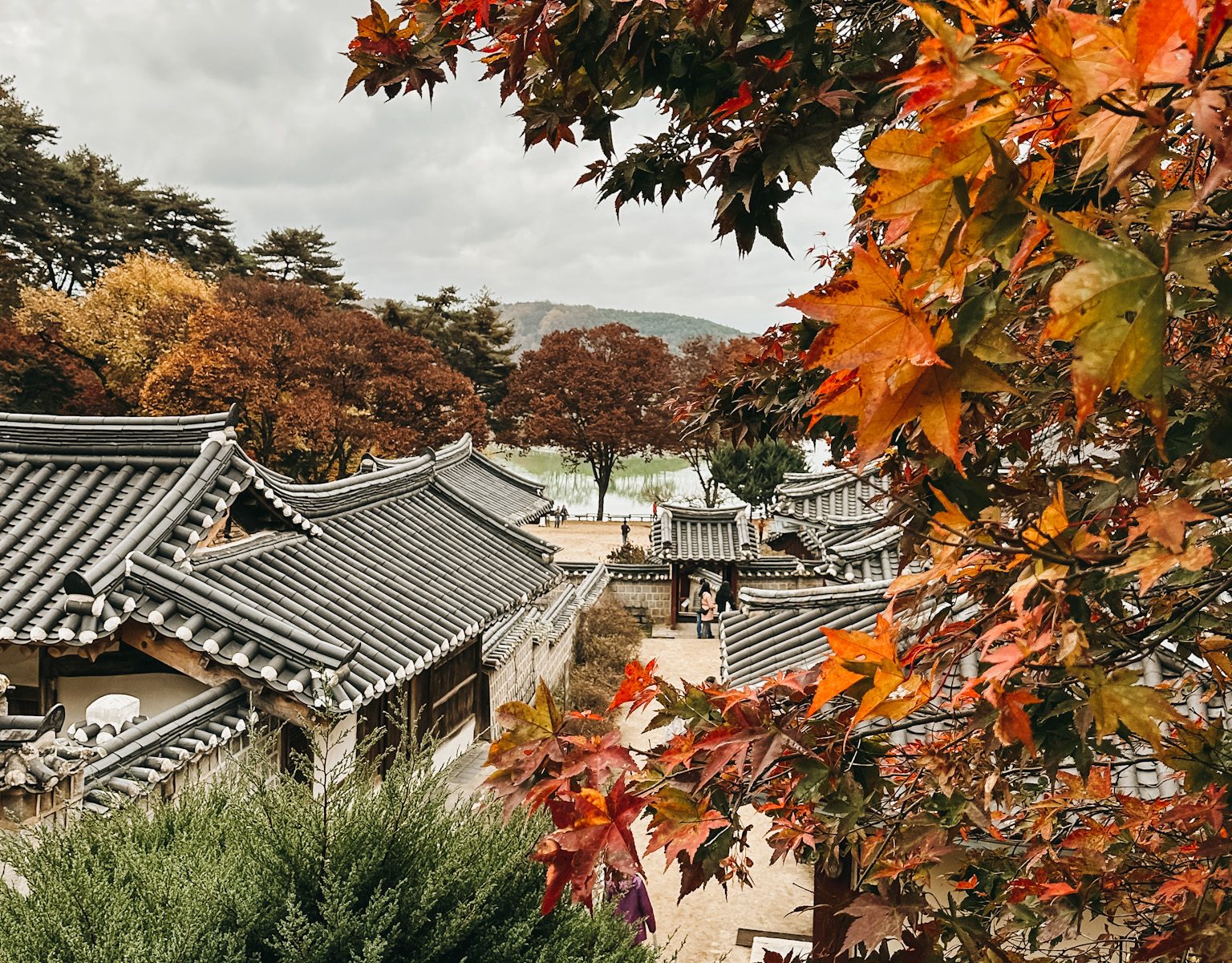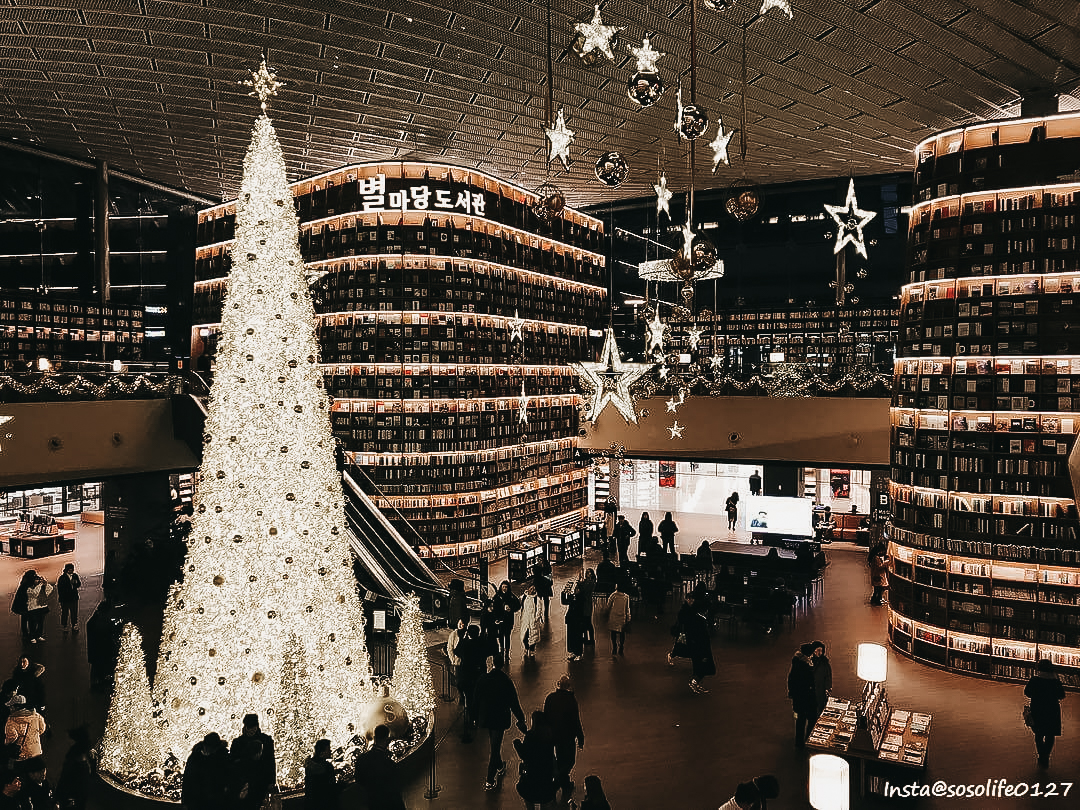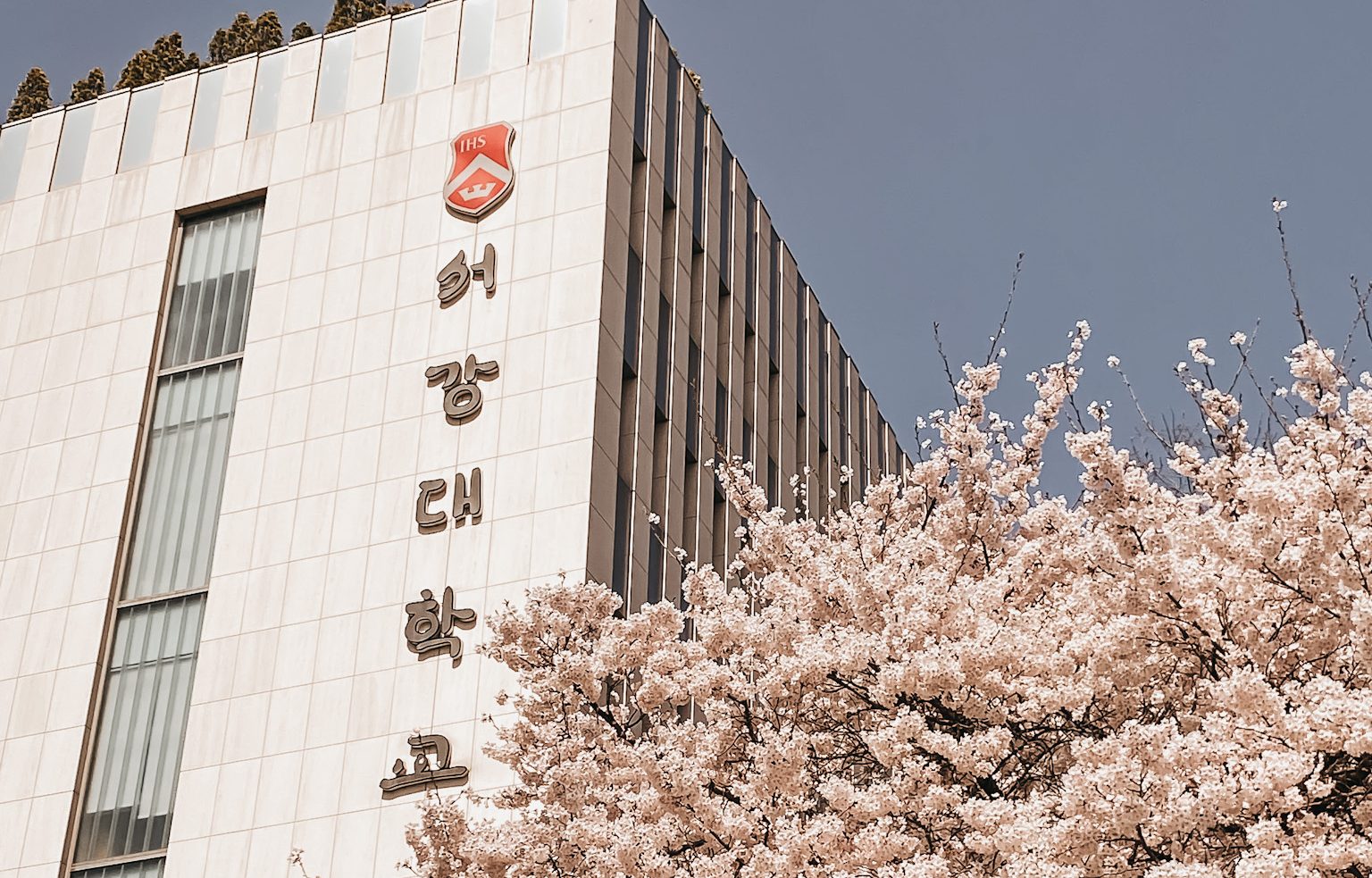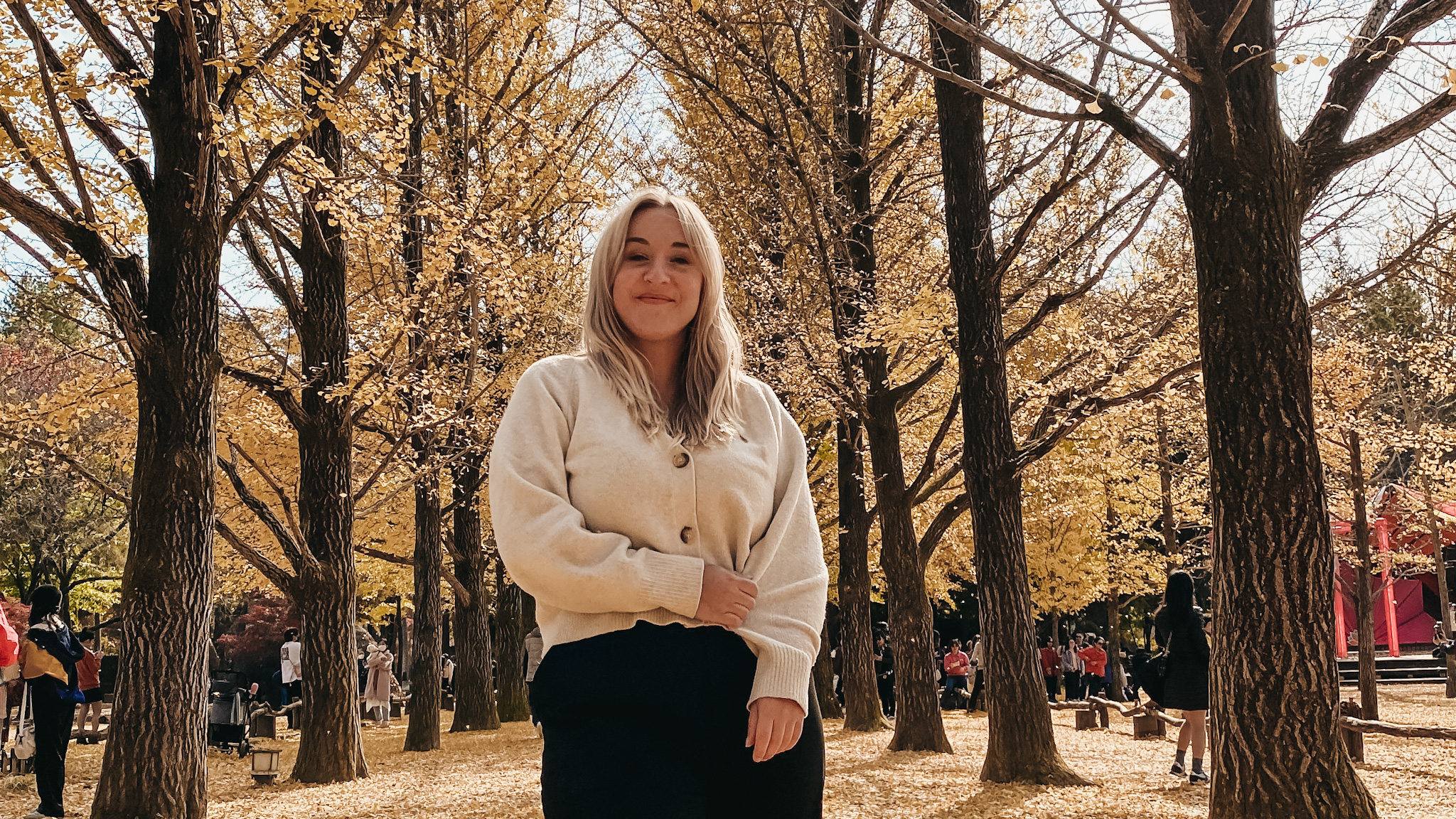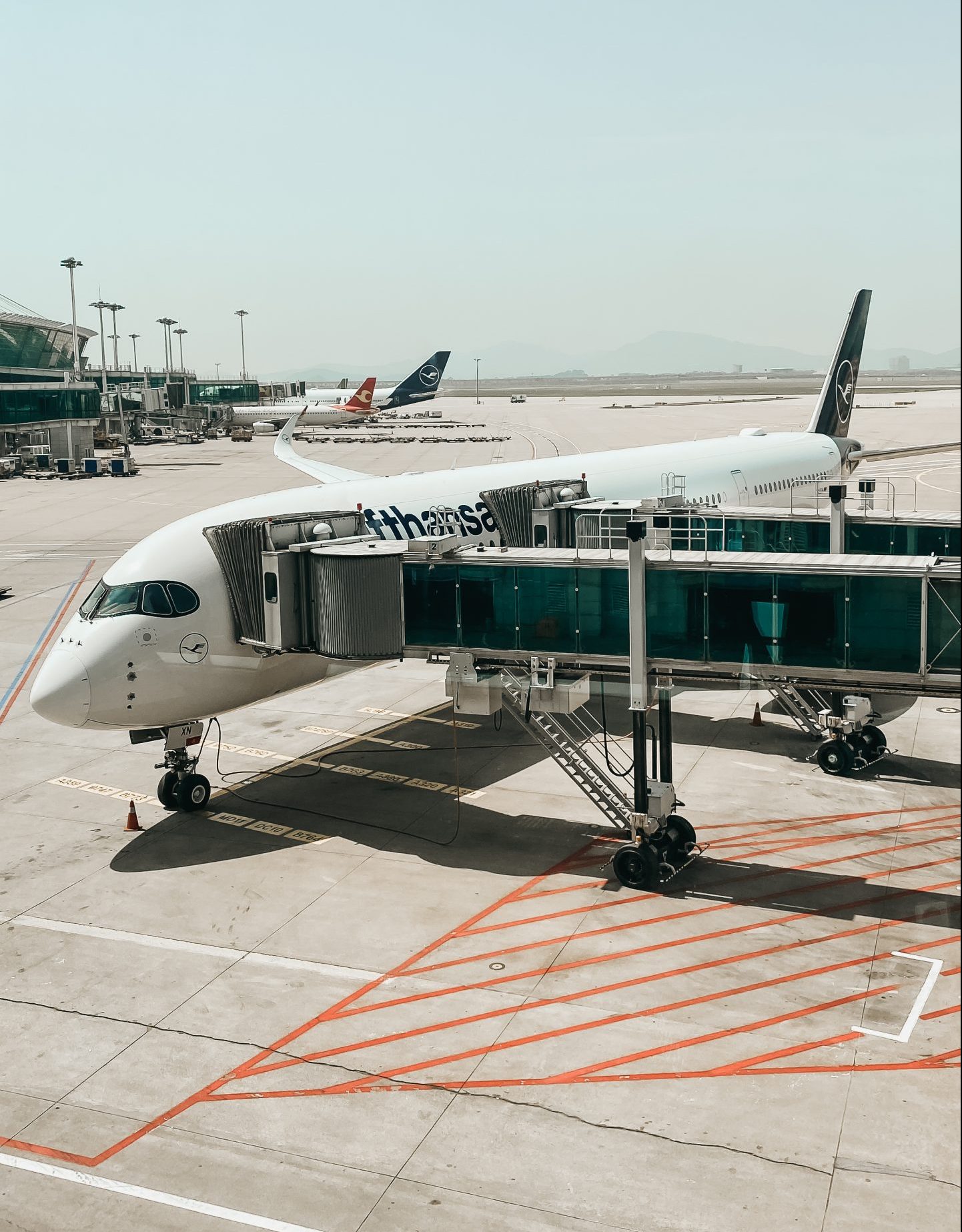South Korea – a land of rich traditions, modernity and breathtaking landscapes, known for K-Pop, Korean Drama, Technology, Skin care, Fashion and so much more. It became a favorite Travel destination for tourists all over the world offering an unforgettable travel experience. So in this ultimate guide, I’ll cover everything you need to know for an amazing South Korea trip from Basic Information about the country, weather all around the year, Visa and Entry Requirements, best Korean SIM Cards, Transportation, Must Visit Spots and Recommended Activities in Korea. So let’s dive right into it:
In this post:
ToggleBASICS
South Korea is an East Asian country known for its culture, exceptionally delicious food, and technology-driven economy. It is located on the southern half of the Korean Peninsula and is one of the most densely populated countries in the world with a population of over 51 million people. Of these, approximately 40% live in and around the capital city of Seoul. The country is also known for K-pop music, Korean dramas, Skincare and Fashion and gained popularity worldwide in recent years.
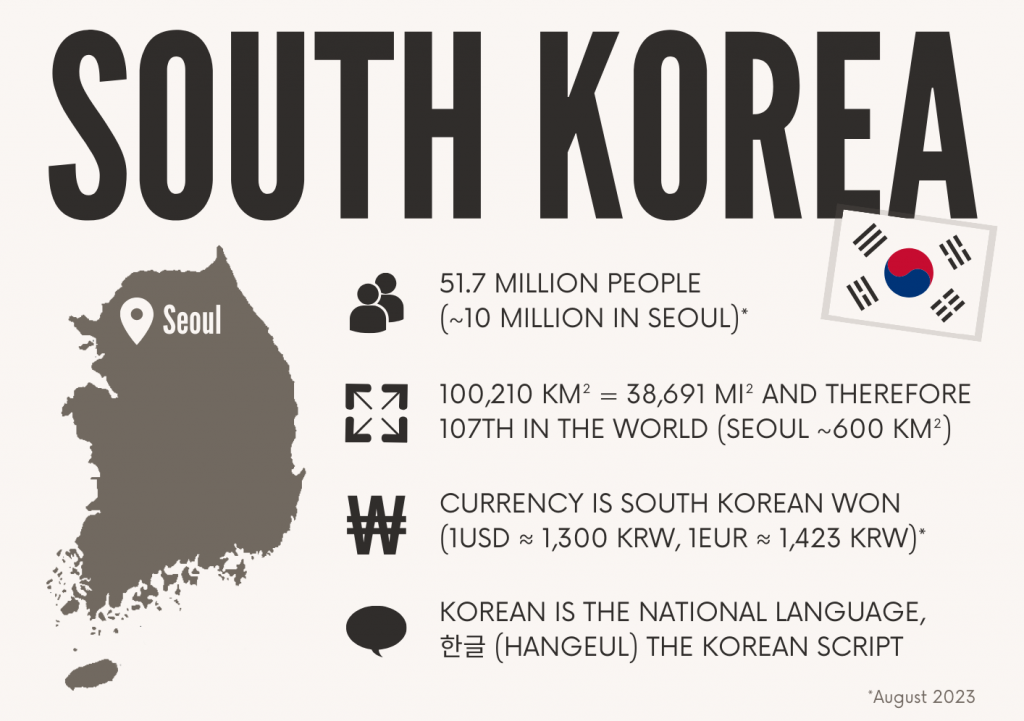
PLANNING
Weather
Traveling to South Korea is always a good idea as each season offers a unique and captivating experience. Generally you can say that summers are really hot and humid while winters can be freezing cold. Still I found all seasons to be beautiful and worth visiting, so here a little more details about what to expect.
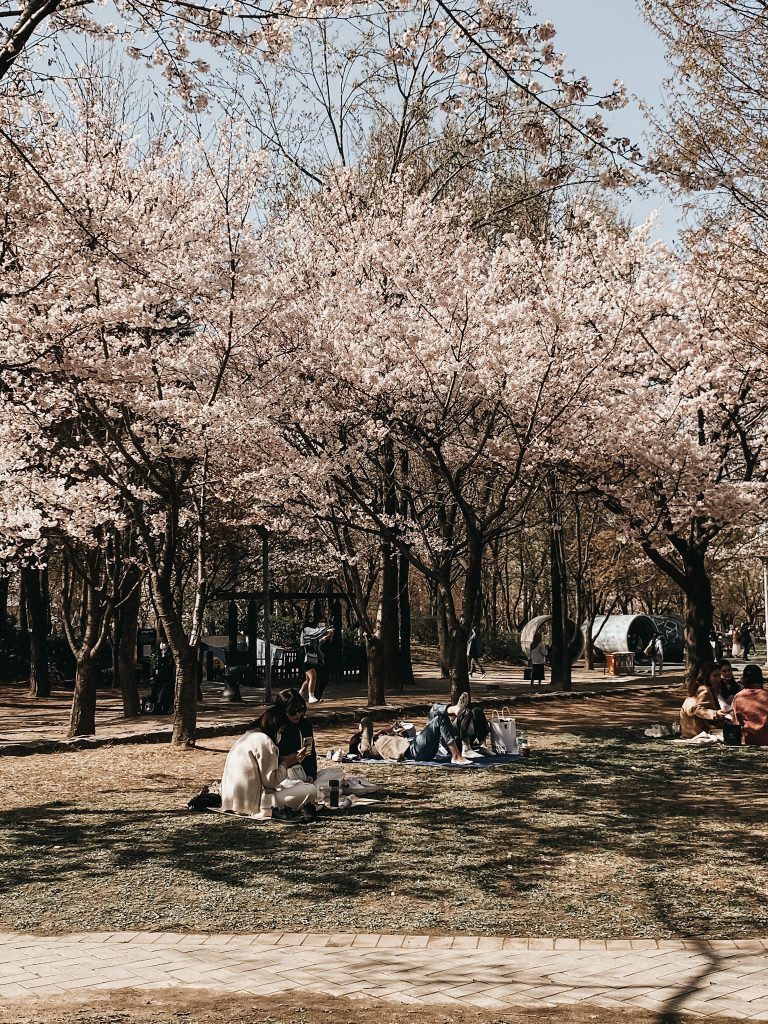
Spring
(March – May)
Spring in South Korea is mild and generally pleasant. Make sure to bring a jacket for the still chilly evenings and nights. Temperatures in March are around 3°C (37°F) to 13°C (55°F), in April ranging from 8°C (46°F) to 19°C (66°F) and in May between 14°C (57°F) to 24°C (75°F). Spring is also known for its beautiful cherry blossoms, attracting many tourists.
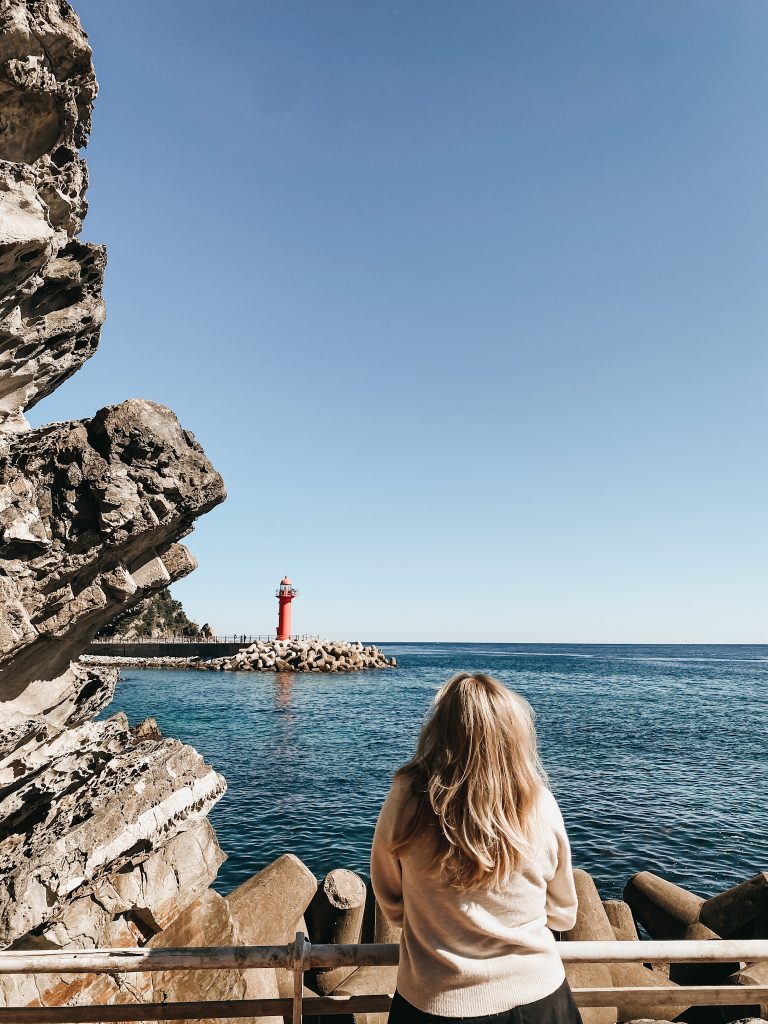
Summer
(June – August)
Because of the Korean Monsoon, summers in Seoul are hot and humid. June temperature is similar to May between 14°C (57°F) to 24°C (75°F), while July and August are the hottest months of the year. Temperatures ranging from 25°C (73°F) to 35°C (86°F) or even higher. July and August also experience a significant amount of rainfall, so be prepared for occasional showers or thunderstorms.
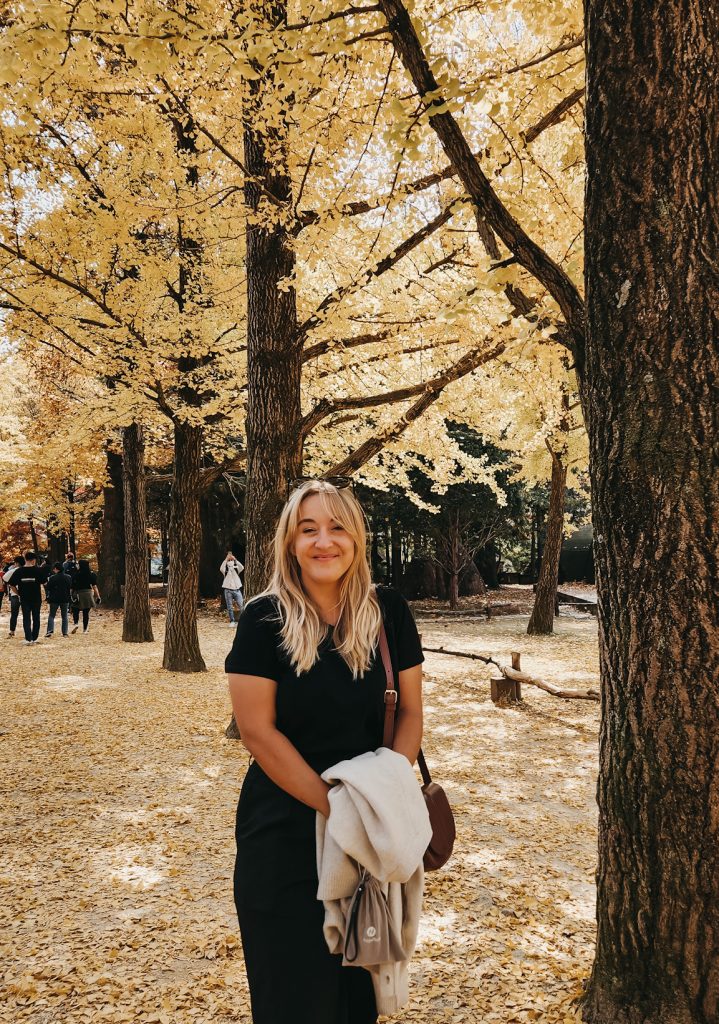
Fall
(September – November)
Autumn in Seoul is mild and in my point of view it’s the best time to visit. September starts with temperatures ranging from 19°C (66°F) to 26°C (79°F) and gradually cools down. October brings crisp and cool weather, with temperatures ranging from 11°C (52°F) to 19°C (66°F). November gets colder, with temperatures ranging from 4°C (39°F) to 12°C (54°F). Autumn foliage is another highlight, with vibrant colors across the country.
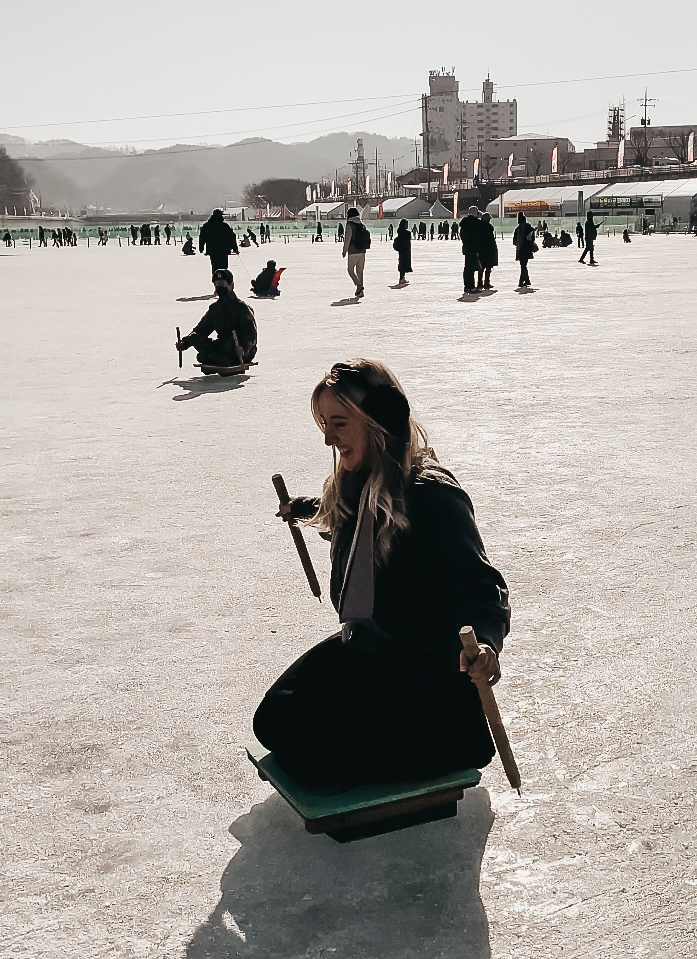
Winter
(December – February)
Winters in Seoul are cold and often snowy. December starts with temperatures ranging from -3°C (27°F) to 5°C (41°F). January and February are the coldest months, with temperatures ranging from -7°C (19°F) to 1°C (34°F). Snowfall is common during winter, creating a picturesque atmosphere. It’s essential to bundle up and be prepared for icy conditions.
NEXTSTOPKOREA TIP: The busiest times are March to early April because of Cherry Blossom & End of October to November because of the Fall Foliage. If you want to avoid those crowded and overpriced periods, I recommend coming end of April to June or September to Mid of October.
Visa
When planning a trip, understanding the entry requirements is crucial. Fortunately, South Korea has made it easier for travelers from various countries to explore its beauty through the K-ETA (Korean Electronic Travel Authorization) system.
This online process allows citizens of eligible countries to obtain a travel authorization before their departure, eliminating the need for a visa for short stays. The K-ETA is valid for up to 90 days (180 days for Canada) and permits tourism, visits for business meetings or visiting relatives. If you want to know how to apply, here the official >K-ETA Application Guide. Also make sure, that your passport has at least 6 months validity when entering Korea.
Here the list of K-ETA eligible nations and the allowed period of stay (last updated August 2023):
- ALBANIA (30)
- ANDORRA (30)
- ANTIGUA-BARBUDA (90)
- ARGENTINA (90)
- AUSTRALIA (90)*
- AUSTRIA (90)*
- BAHAMAS (90)
- BAHRAIN (30)
- BARBADOS (90)
- BELGIUM (90)*
- BOSNIA-HERCEGOVINA (30)
- BOTSWANA (90)
- BRAZIL (90)
- BRUNEI (30)
- BULGARIA (90)
- CANADA (180)*
- CHILE (90)
- COLOMBIA (90)
- COMMONWEALTH OF DOMINICA (90)
- COSTA RICA (90)
- CROATIA (90)
- CYPRUS (30)
- CZECH (90)
- DENMARK (90)*
- DOMINICAN REP. (90)
- ECUADOR (90)
- EL SALVADOR (90)
- ESTONIA (90)
- ESWATINI (30)
- FIJI (30)
- FINLAND (90)*
- FRANCE (90)*
- GERMANY F.R (90)*
- GREECE (90)
- GRENADA (90)
- GUATEMALA (90)
- GUYANA (30)
- HAITI (90)
- HOLY SEE (30)
- HONDURAS (30)
- HONGKONG (90)*
- HUNGARY (90)
- ICELAND (90)
- IRELAND (90)
- ISRAEL (90)
- ITALY (90)*
- JAMAICA (90)
- JAPAN (90 Days)*
- KAZAKHSTAN (30 Days)
- KIRIBATI (30)
- KUWAIT (90)
- LATVIA (90)
- LESOTHO (60)
- LIECHTENSTEIN (90)
- LITHUANIA (90)
- LUXEMBOURG (90)
- MACAO (90)*
- MALAYSIA (90)
- MALTA (90)
- MARSHALL ISLANDS (30)
- MAURITIUS (30)
- MEXICO (90)
- MICRONESIA (30)
- MONACO (30)
- MONTENEGRO (30)
- MOROCCO (90)
- NAURU (30)
- NETHERLANDS (90)*
- NEW CALEDONIA (30)
- NEW ZEALAND (90)*
- NICARAGUA (90)
- NORWAY (90)*
- OMAN (30)
- PALAU (30)
- PANAMA (90)
- PARAGUAY (30)
- PERU (90)
- POLAND (90)*
- PORTUGAL (90)
- QATAR (90)
- SERBIA (90)
- ROMANIA (90)
- RUSSIA (60)
- SAMOA (30)
- SAN MARINO (30)
- SAUDI ARABIA (30)
- SEYCHELLES (30)
- SINGAPORE (90)*
- SLOVAK (90)
- SLOVENIA (90)
- SOLOMON IS. (30)
- SPAIN (90)*
- SOUTH AFRICA (30)
- ST. KITTS-NEVIS (90)
- ST. LUCIA (90)
- ST. VINCENT (90)
- SURINAM (90)
- SWEDEN (90)*
- SWITZERLAND (90)
- TAIWAN (90)*
- THAILAND (90)
- TONGA (30)
- TRINIDAD-TOBAGO (90)
- TUNISIA (30)
- TURKIYE (90)
- TUVALU (30)
- U.A.E (90)
- UK-GBR (90)*
- UK – GBD, GBN, GBO, GBP, GBS (30)
- USA (90)*
- URUGUAY (90)
- VENEZUELA (90)
* K-ETA is temporarily exempted for 22 countries until December 31, 2024 – means you can just travel to Korea without a applying for K-ETA
If your country is not in this list, then it might be, that you need a visa to travel to South Korea or that your home country is having a different agreement with South Korea. Therefore please check the visa requirements on >the Korea Visa Portal.
Health
While South Korea has an advanced healthcare system, it’s wise to take a few steps before you depart. Make sure your routine vaccinations are up-to-date, including measles, mumps, rubella, and influenza. While no specific vaccinations are required for entry, being immunized is recommended by most countries.
South Korea’s healthcare system is highly regarded for its quality and accessibility, with modern facilities and well-trained medical professionals. However, unexpected situations can happen, and that’s where travel insurance comes in. Having >comprehensive travel insurance that covers medical expenses is strongly recommended. It provides peace of mind knowing you’re covered in case of illness or injury.
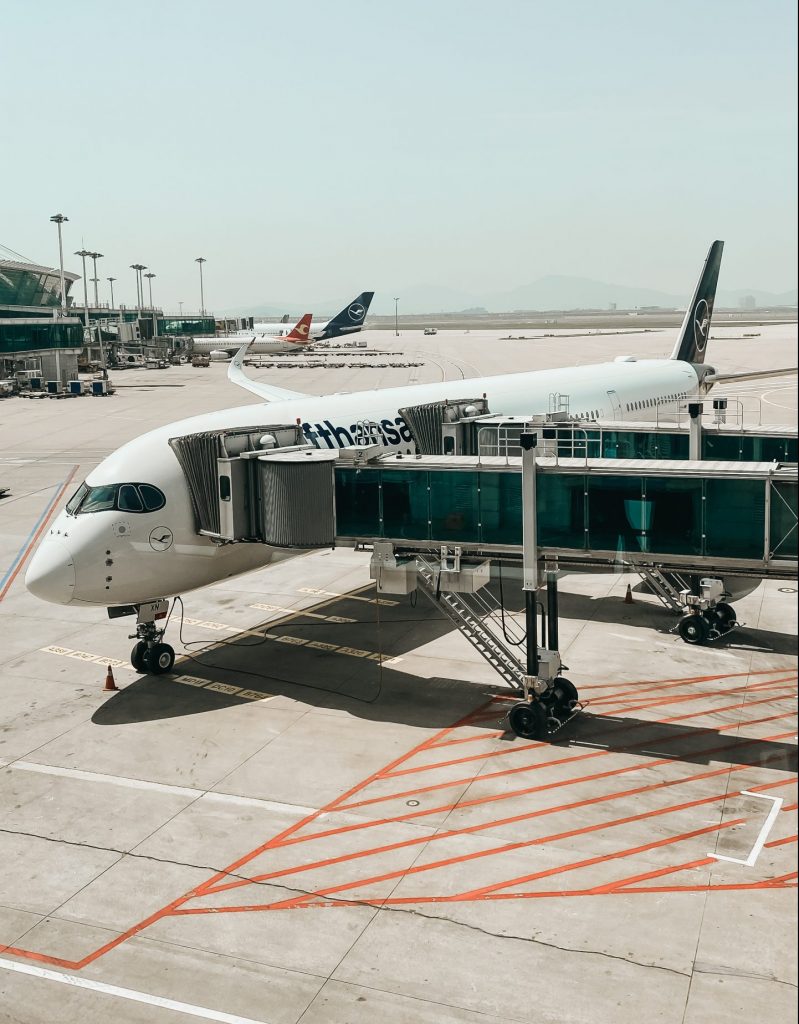
Flights
Incheon International Airport (ICN) and Gimpo International Airport (GMP) are the primary hubs that connect South Korea to the world. Incheon International Airport, located around 1 hour from Seoul, is the larger of the two and offers a wide array of international flights. Gimpo International Airport, about 40 minutes from Seoul, mainly handles domestic flights like to Jeju and some short-haul international routes. Both are known for their modern facilities and efficient services.
NEXTSTOPKOREA TIP: I usually book my flights on Kiwi, Momondo or on Skyscanner >here.
Hotel
Choosing the right accommodation for your South Korea trip sets the tone for a comfortable and memorable stay. From budget-friendly options like guesthouses and hostels ranging from $30 to $60 per night, to mid-range hotels providing a balance between comfort and cost in the range of $60 to $150 per night, and upscale hotels offering luxury from $200 onwards, South Korea caters to all types of travelers.
As you explore different neighborhoods to stay within Seoul, consider Myeongdong (Jungno) for most convenient sightseeing, Heongdae (Mapo) or Itaewon (Yongsan) for nightlife and Gangnam for Shopping. These central locations not only grant easy access to bustling markets, vibrant culture, and historic sites, but they also offer a range of accommodations that suit various budgets.
If you want to save money and don’t mind a daily commute in the subway, you can also check accommodations a bit outside of the city centre. And if you’re looking for the fully traditional Korean experience than have a look at Hanok-Stays – the Korean traditional housing.
NEXTSTOPKOREA TIP: Airbnb, Booking and similar Hotel-Websites work perfectly fine for your Accommodation search in South Korea. A famous Korean app for this is ‘Yanolja’. As everywhere I highly recommend you to check the reviews of the place you’re planning to stay at!
Language
While English is commonly spoken in most tourist hubs like Myeongdong, Gangnam, Hongdae or Itaewon and you can use the translating app Papago to communicate, branching out with basic Korean phrases can truly enrich your Korea experience. Learning a handful of key expressions can help you navigate beyond the popular areas and connect with locals easier and on a deeper level.
Learning the korean alphabet called hangeul is actually easier than you might think and with some basic phrases like “안녕하세요” (annyeonghaseyo) for “hello” and “감사합니다” (gamsahamnida) for “thank you” you can already achieve a lot when talking to Koreans.
NEXTSTOPKOREA TIP: In case you urgently need a translation for example in a store or taxi, there are luckily services for travelers to help you. You can either use the Korea Travel Hotline or the bbb Korea Service, whose number you can find in the next paragraph. Or check out the bbb App >here.
Important Hotlines
The area code for South Korea is +82, so when calling a South Korean number from abroad, you need to dial this country code before the actual phone number. There also are area codes that vary for different cities and regions (e.g. 02 for Seoul, 051 for Busan, 010 for mobile phone numbers). But for the following numbers those are not necessary either if you are in South Korea:
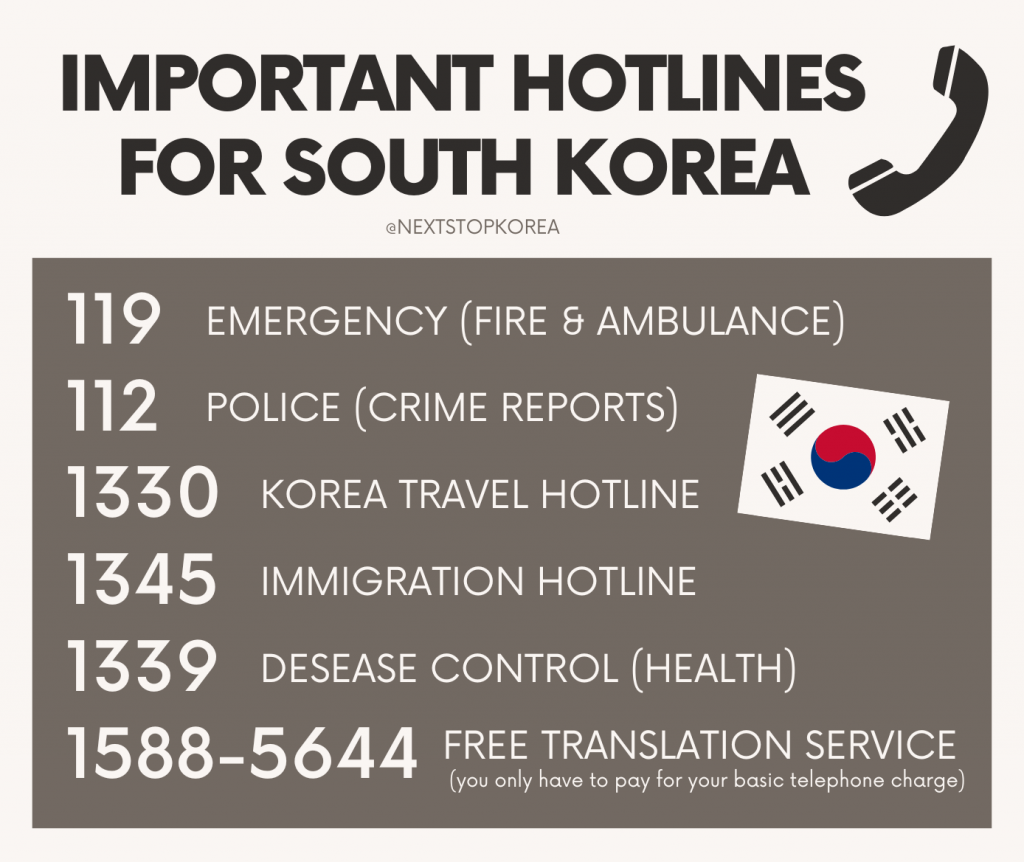
Money
South Korea uses the Korean Won (KRW) as its currency, so familiarize yourself with the currency and the current exchange rates. When I first came to Korea I used an app to calculate the exchange rates for me, so I had a good feeling of how much I actually spent per day.
Make sure you’ve saved enough funds to cover accommodation, activities, and unforeseen expenses. Flights, Hotels and activities can be quite pricey, but you can save a lot through Korea’s cheap public transportation and food options. Depending on your general budget and standards, I recommend 60-100$ per day per person including accommodation, transportation, food and activities.
Credit cards are widely accepted and offer convenience, security, and favorable exchange rates. Among the credit cards commonly recognized in South Korea are Visa, Mastercard, American Express, JCB, and many more. Remember to inform your bank of your travel plans to prevent any payment disruptions.
I recommend you get some cash, even though you can pay almost anything with your credit card – you know.. just in case. You can either use one of the exchange booths at the airports, in Myeongdong or Itaewon (they usually offer quite bad rates), you can use a >WOWExchange Kiosk or you get cash through your credit card from an ATM, e.g. located in front of most convenience stores.
If you’re too afraid that your Credit Card could be declined, I can highly recommend the Namane Card – a transportation card that works like a korean bank card. Find more about that in the Paragraph about Transportation.
Packlist
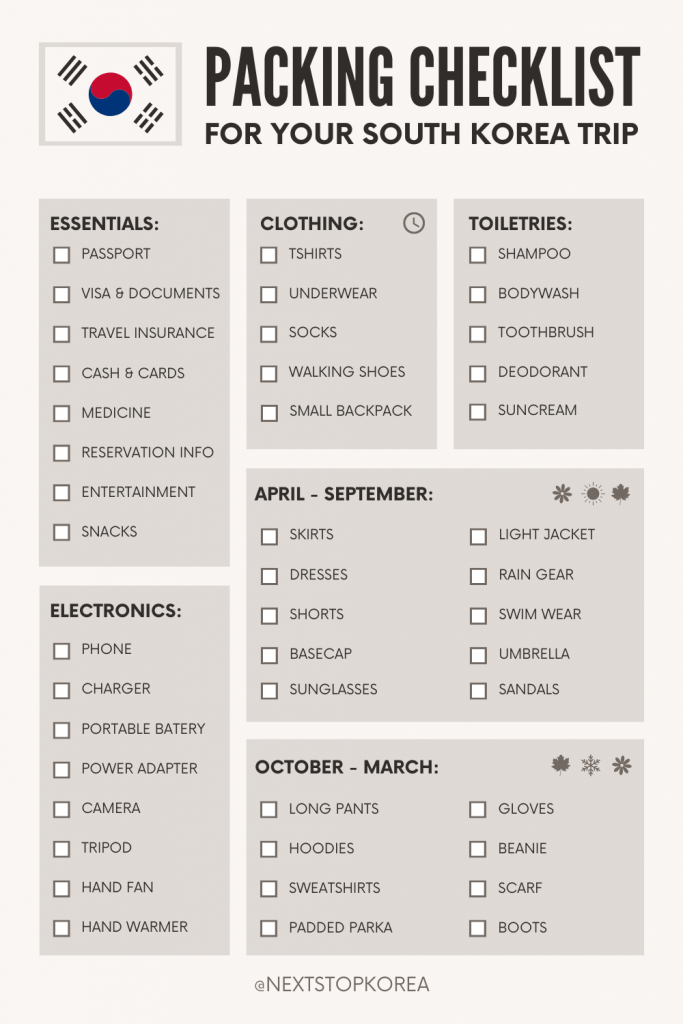
Apps
Before embarking on your journey to South Korea, make sure to download essential travel apps that will enhance your experience and make your visit more convenient and enjoyable.
- Papago: The biggest challenge when traveling in Korea is the language. Papago is by far the best Korean to English translator, can also translate websites and even has a conversation and photo feature.
- Kakao/NaverMap: Since Google Maps has limited functionality in South Korea, it is recommended to download one of the Korean map apps. KakaoMaps and NaverMaps are the two most commonly used options.
- KakaoTalk: Koreans mainly use KakaoTalk instead of WhatsApp or Telegram. So when you make a new friend, they usually don’t ask for your cell phone number, but for your KakaolD.
- Naver: Instead of Google, Naver is the most used search engine in Korea. Restaurant reviews, blogs, booking tools can usually be found quickly on Naver. Compared to Google, I tend to find a local recommendation or hidden gem here more easily.
- KoRail: It you are planning a trip to another city in South Korea, you will need a KTX ticket. The easiest way to book this is to use the official Korail app. This way you also avoid the many rip-off websites online.
- TabaKakaoT: Compared to most other big cities, cabs in Korea are much cheaper, so sometimes it’s more convenient to take a cab. With KakaoT that is super easy and you can pay with credit card in the cab.
- Seoul Bike: One of my favorite activities in Seoul is a bike ride along the Han River. Although you can find larger bike rentals at the hotspots, you are much more flexible with the Seoul Bike App. Once set up, you can rent and return a bike within seconds.
- Currency: There are several different apps in the appstore, but they all have similar functions to convert currencies quickly and easily. Especially in the beginning it helped me to get a feeling for how much money I spend.
- AirVisual: In Korea people wear a mask not just because of Covid, but also because of the regularly occurring fine dust pollution. With AirVisual, you can quickly see when it is advisable to wear a mask outside and to do indoor activities.

Etiquette
Here the 10 most important tips you should know and keep in mind to not look rude to Koreans:
- Bowing: Bowing is a common form of greeting and showing respect. The deeper the bow, the more respect is conveyed.
- Shoes Off: It’s customary to remove your shoes before entering someone’s home or certain traditional establishments.
- Tipping: Tipping is not common in South Korea and may even be refused. Exceptional service is already included in the price.
- Use Both Hands: When giving or receiving items, especially money or business cards, use both hands. This gesture reflects politeness and respect for the person you’re interacting with.
- Dining Etiquette: During meals, wait until the eldest or the host starts eating before you begin. Do not start eating or stop eating before everyone is finished. Additionally, avoid sticking chopsticks upright into a bowl of rice, as it resembles a funeral ritual.
- Respect for Elders: Respect for elders is deeply ingrained in Korean society. Use formal language and honorifics (ending sentences with “-yo”) when addressing older individuals. When pouring drinks, hold the bottle with two hands when offering to someone older than you.
- Silence on Public Transport: Maintain a quiet demeanor when using public transport. Loud conversations and phone calls are generally considered rude. Use headphones if you want to listen to music or watch videos.
- Cover Shoulders and Knees at Temples: If you plan to visit temples or religious sites, dress modestly. Cover your shoulders and knees as a sign of respect for the sacred space.
- Queueing Up: Whether you’re waiting for public transport, entering an establishment, or even using an elevator, respect the queue. Cutting in line is considered impolite.
- Trash Sorting: South Korea has strict waste disposal regulations. Sort your trash into different categories, including food waste, recyclables, and general waste. That’s also one reason why there are almost no garbage cans in public as people should bring their trash home to recycle it properly. But no worries: Most subway stations have a trash can 😀
ARRIVAL
Incheon Airport
When arriving at Seoul’s Main Airport there are some important steps to go through. First, you’ll proceed to immigration, where you’ll need your passport and visa ready for inspection. The process is generally efficient, and friendly immigration officers are there to assist you in English or Korean.
After that, you’ll head to baggage claim to collect your luggage. Incheon Airport is known for its quick baggage handling, so I promise you won’t be waiting long!
Once you have your bags, it’s time to breeze through customs. Please check the latest customs regulations for South Korea when packing your suitcase.
Finally, you’ll step out of the arrivals area into a bustling terminal filled with helpful signs and information booths. Make sure to get a Korean SIM Card and some cash before leaving the airport. Find a map of the Airport Facilities >here or below.
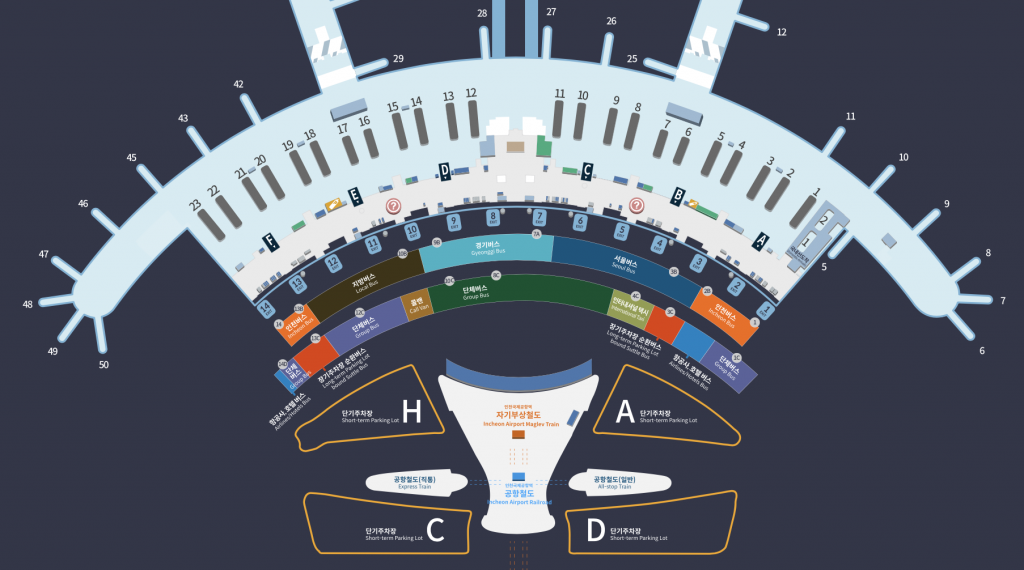
Internet
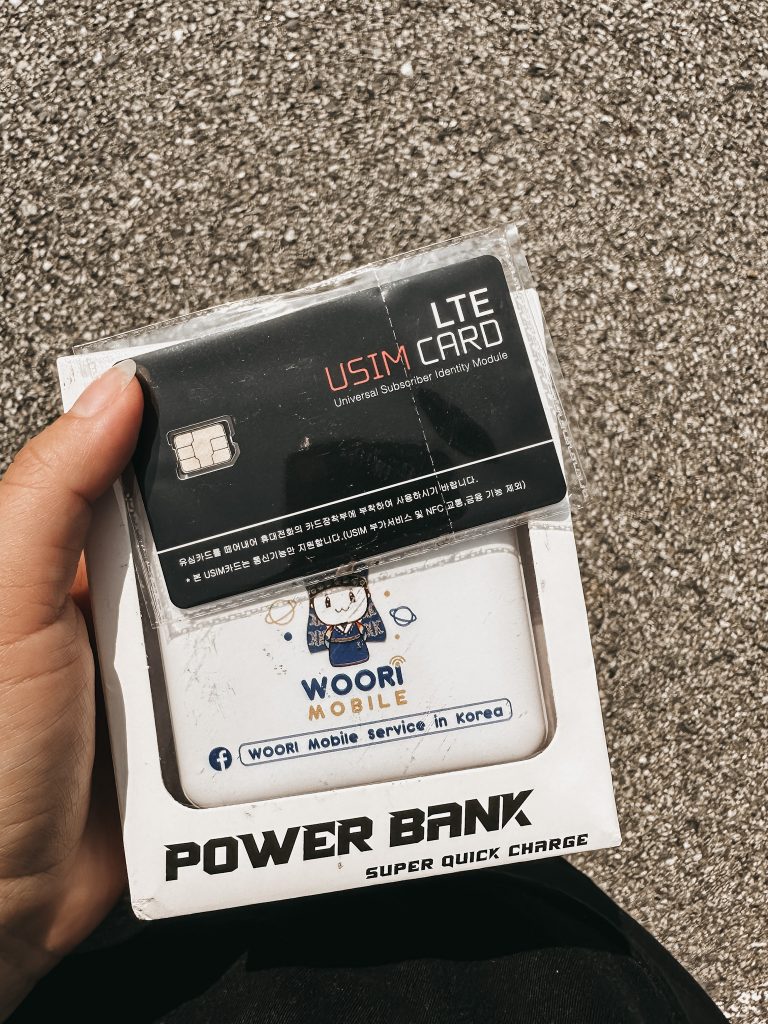
Right after clearing customs, you’ll spot various kiosks and mobile service providers offering SIM cards tailored to your data and duration needs. Whether it’s a short stay or an extended visit, you can easily choose a prepaid SIM card with a suitable data package. I can recommend this SIM card from >Klook or >Woorimobile.
Once inserted into your phone, you’ll be instantly connected to South Korea’s fast and reliable mobile networks, ensuring you can navigate, communicate, and share your Korean adventures with ease.
In case your Phone has a SIM Lock or you’re coming with some friends or stay a few weeks, maybe a >pocket wifi device could be helpful.
TRANSPORTATION
It’s at this point that your Korean adventure truly begins, and you can start exploring this dynamic country. But before I will give you recommendations what to do and see, I want to introduce you to the different Transportation Options in South Korea.
Transportation Cards
But first, let me introduce you to your new best travel-buddy: a Korean transportation card! Those smart cards offer a convenient and efficient way to pay for various modes of public transportation, including subways, buses, taxis, some ferries and even can be used as a payment method at many convenience stores. Users can recharge those cards and use them as often as they want by easily tapping them on card readers when boarding or leaving public transportation. They can be used not just in Seoul, but in the whole country, even on Jeju Island.
You could also buy single ride tickets at the vending machines in every Subway station or get the MPass, which is like a 1 to 7 Day unlimited pass. But for this ticket to be worth it, you have to take the Subway at least 7 times per Day. The Seoul Metro also announced new unlimited 1 Day (5,600 KRW) or 3 Day (11,800 KRW) Passes, but they’re not yet available. So for now I would highly recommend you to get a transportation card, here are two options explained:
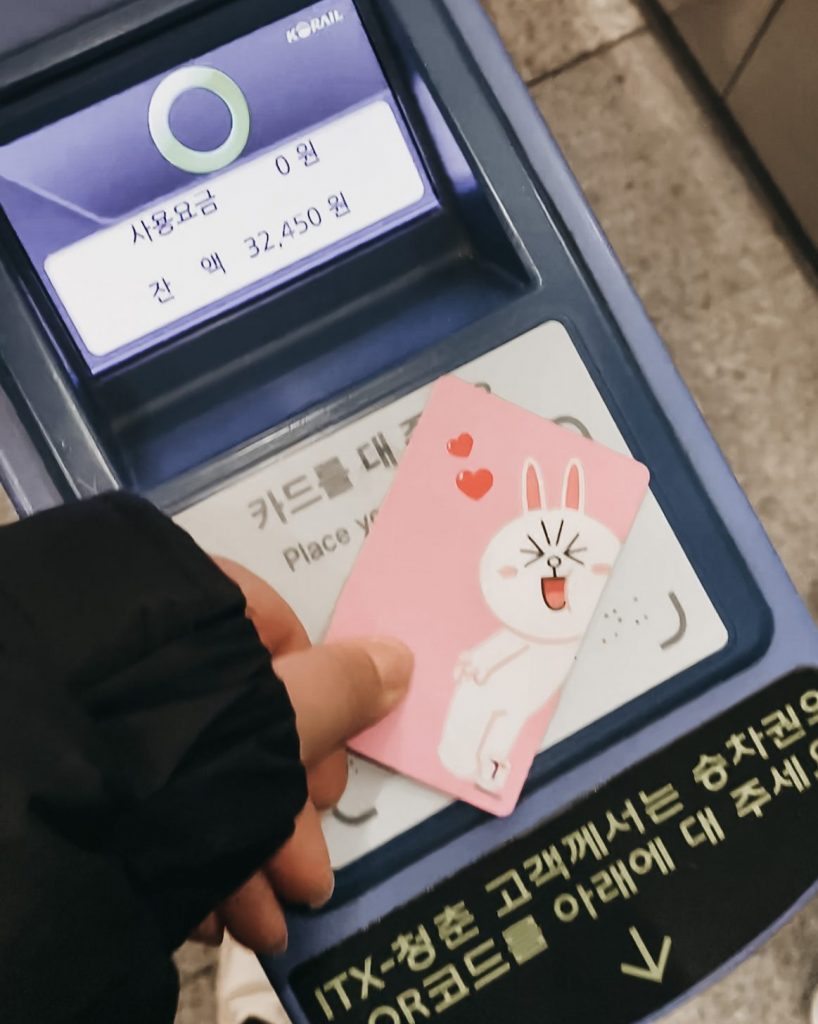
T-Money Card
As an originally government founded company this is the most common card in South Korea – you probably heard of this one too. You can basically find them everywhere with different designs, for example by Kakao or Line Friends or the most famous Kpop Groups (around 4,000-7,000 KRW). You can top up money (only by using cash) at convenience stores and at the machines in every Subway Station and then use it in the whole country for public transportation.
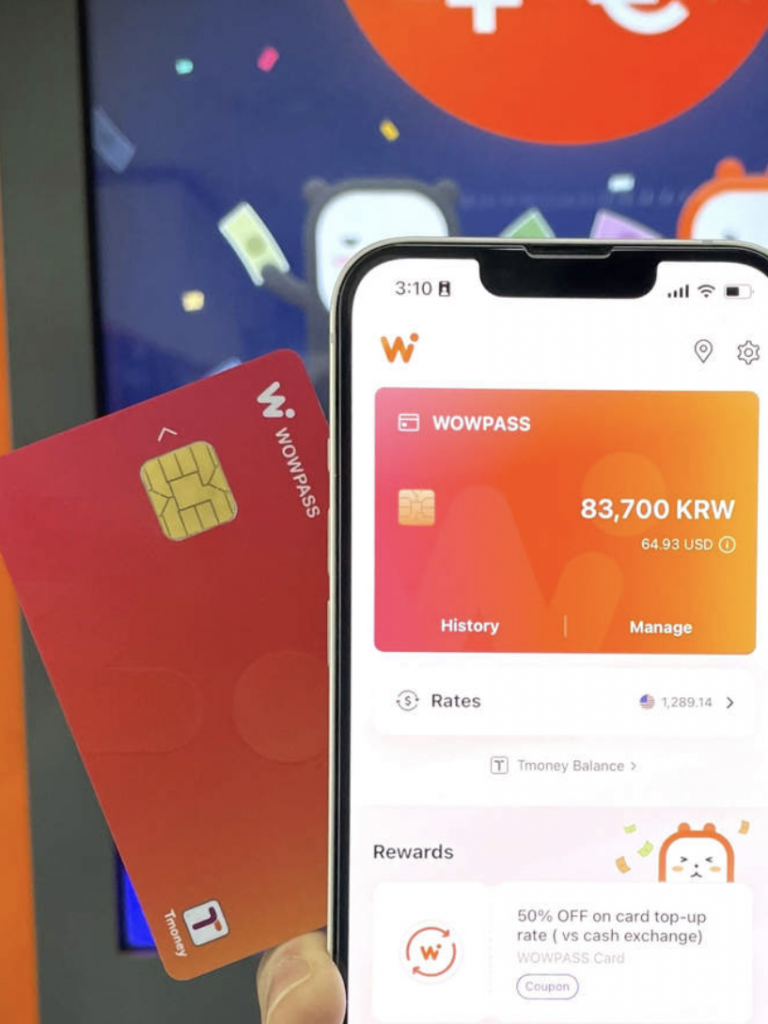
WOW Pass
Even though many people might not know about this yet, this is my recommendation! It’s like the following Namane Card offering all the advantages of a Korean Bank Account including a Transportation Card. but with this one you can also withdraw cash from various Kiosks and the app is very handy and helpful!
You can get the Wow Pass in advance >here.
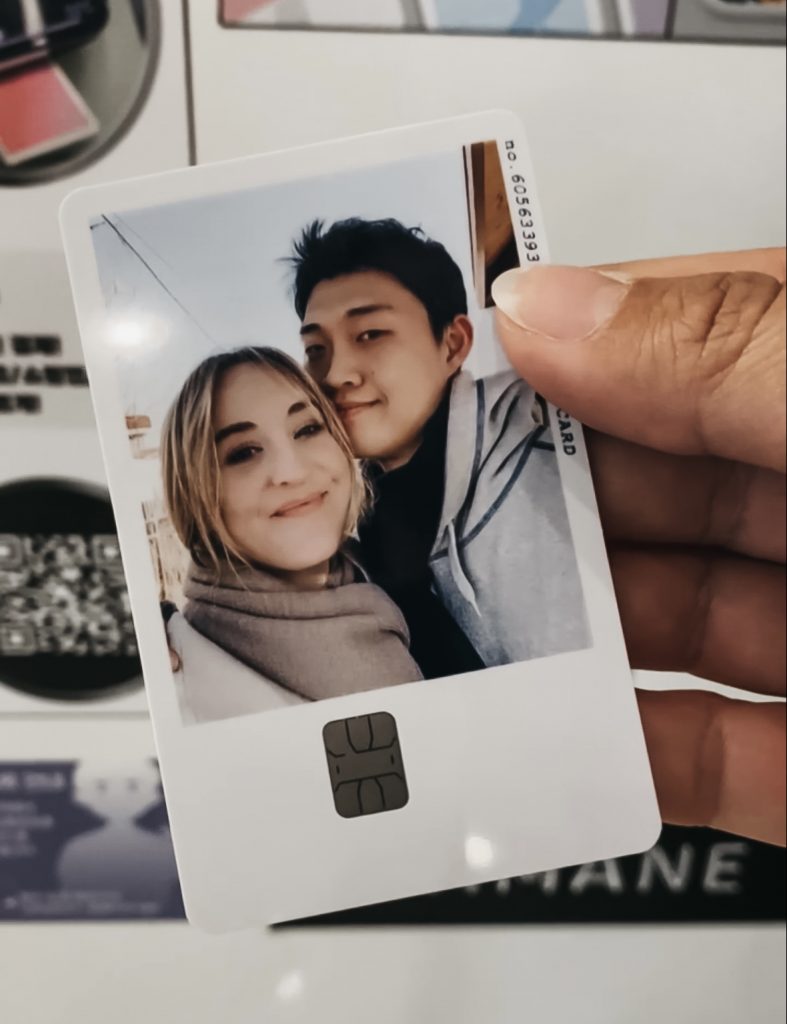
Namane Card
Even though many people might not know about this yet, but this is my absolute recommendation! You can not just freely personalize the design of your Namane Card, you can also use it like a normal Korean bank card, top it up with cash or your foreign credit card (with a small transaction fee) and check the remaining amount easily in the app. It’s much more convenient and especially for tourists the best option.
NEXTSTOPKOREA TIP: You can get the Namane Card for 7,000 KRW (printed with your favorite design within a few minutes) at one of the Kiosks in Incheon Airport. Find out more >here.
Navigation Apps
Some people prefer to read the Seoul Subway or Bus Map simply as it is.. That’s absolutely not an option for me 😀 Luckily there are many Apps you can use to find the best way to get from A to B:
- GoogleMaps (works to some extent)
- Seoul Subway App
- KakaoMaps
- NaverMaps
- …
The last App of this list is the one I use and the one I explain in >my Subway Guide. There is no special reason, why I would recommend NaverMaps in comparison to KakaoMaps, it’s like Apple vs. Samsung.. You always like what you first got used to 😀
Transportation from the Airport
One of the first exciting steps is making your way from Incheon Airport to the vibrant heart of Seoul. There are different options I will just list here. For a full Guide click on the link below!
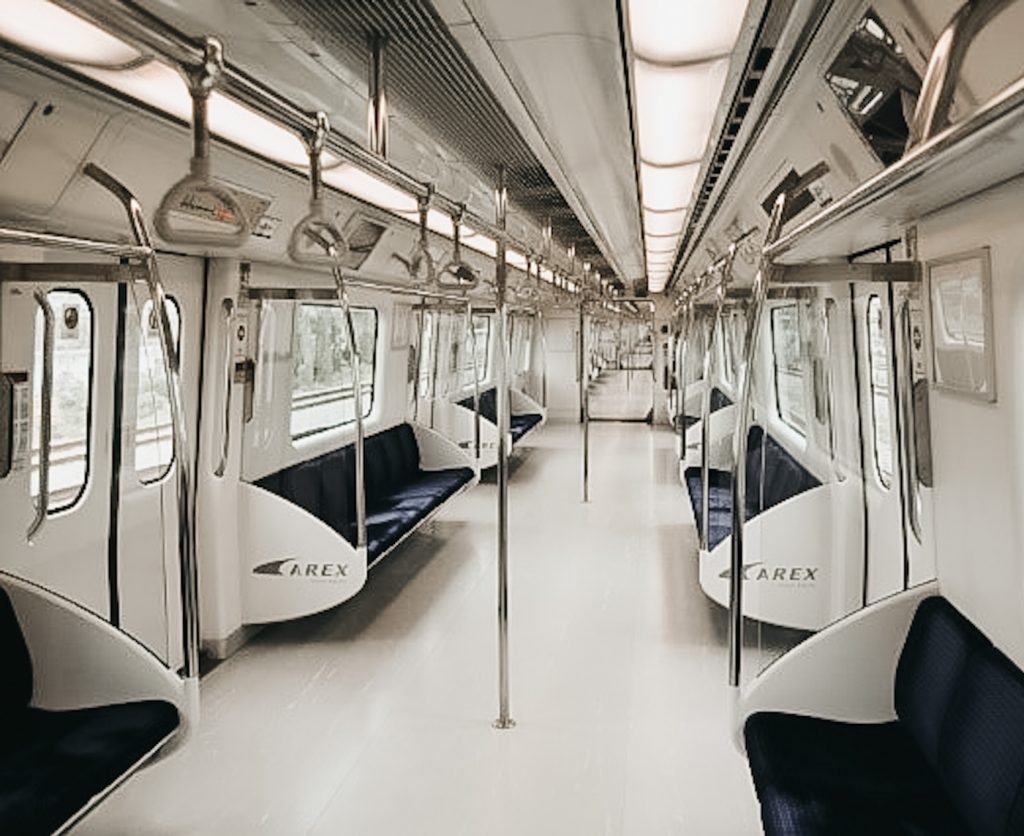
- Airport Railroad Express (AREX)
- Express Train to Seoul Station
- All-Stop Train with many stops
- Airport Limousine Bus (my fav!)
- Taxi
- General Taxi (Orange, White)
- Private Taxi (Black) > AVOID
- International Taxi (fixed price)
- Private Driver
- Rent Car
Transportation within Seoul
From the extensive subway network, various bus routes, well-maintained roadways, comparably cheap Taxis, to the impressive bicycle-sharing system and numerous pedestrian-friendly areas – There are endless ways to explore Seoul. I will explain some in the following paragraphs.
NEXTSTOPKOREA TIP: For all public transportation options: Try to avoid the rush hours during 6:30 – 9am and 4:30 – 7pm, as it can get really really busy and crowded in Subways or on the streets during that time.
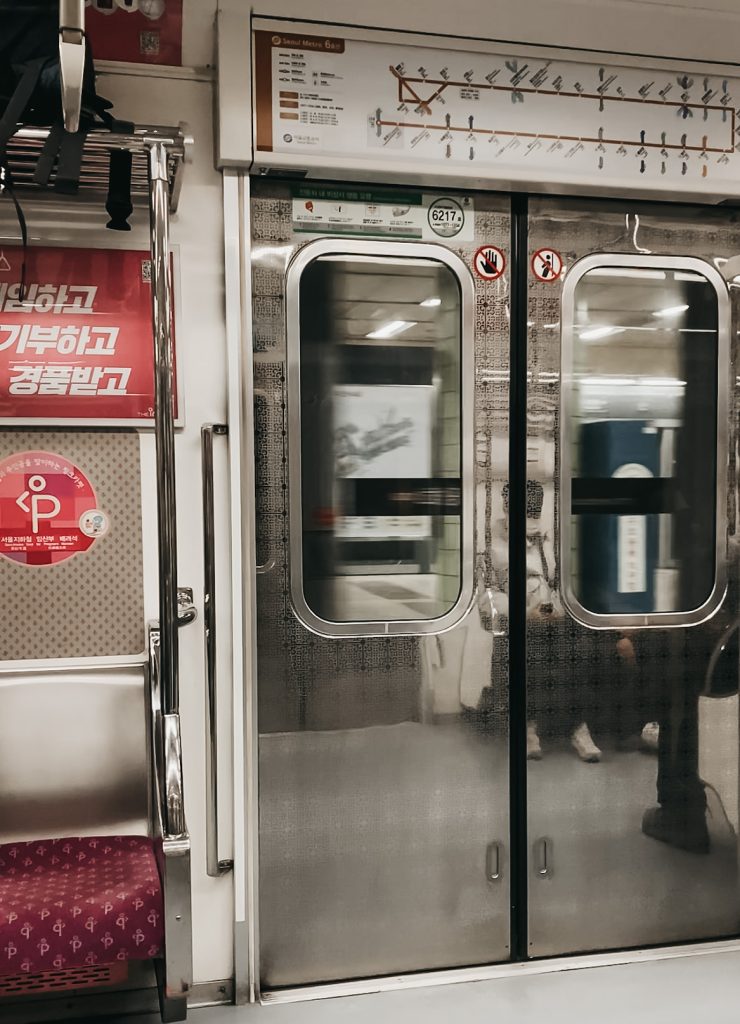
Subway
The Seoul subway fare system is based on distance, so the first 10 km start from 1,250₩. For longer trips a small additional fee will be applied when leaving the station. Seoul Subways usually start operating at 5am and the last train leaves around midnight or until 1am. After that there are usually only night busses and taxis available.
The Seoul subway system is a marvel of efficiency and connectivity, making it the lifeline of the city’s bustling urban landscape. With over 20 lines crisscrossing the metropolis and reaching even the farthest corners of the city, it’s no wonder that Seoul’s subway is renowned as one of the best Subway Systems in the world. Not only is it the fastest way to beat the notorious traffic jams, but it’s also remarkably cheap, clean and safe.
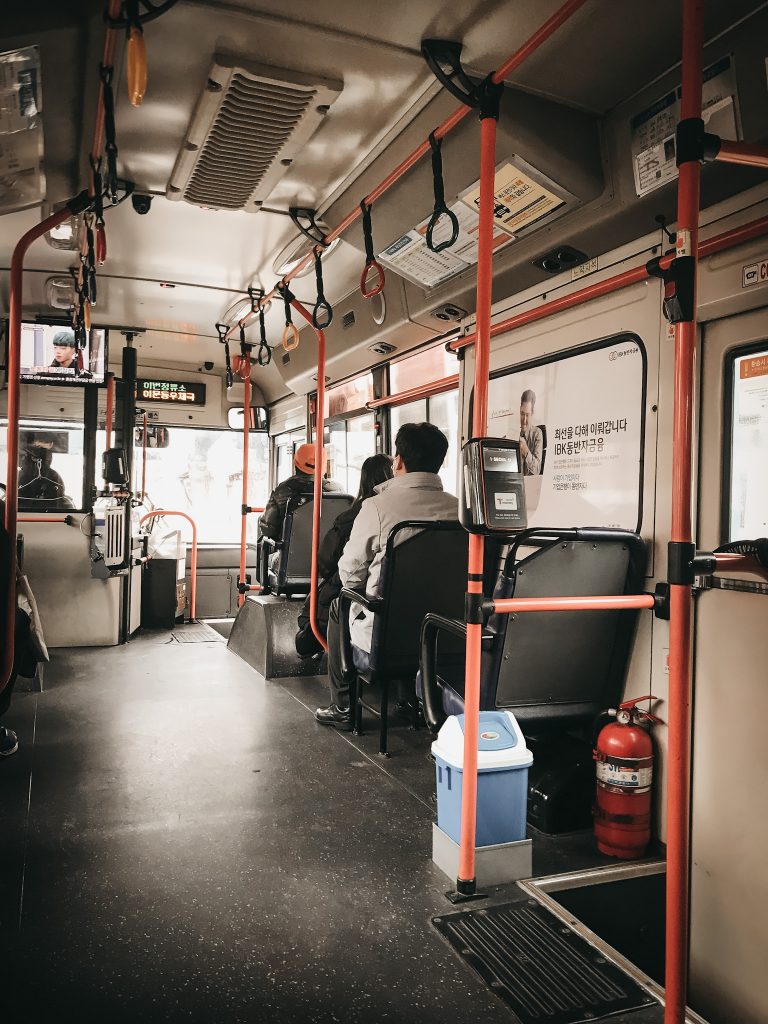
Bus
With an extensive network of routes covering virtually every nook and cranny of Seoul, the bus system is a reliable and cost-effective mode of transit. Especially for people that might be too overwhelmed by the Subway system or that want to see Seoul’s lively street scenes while moving from one exciting destination to the next, taking a bus is a great alternative.
You have to enter the bus in the front tapping your T-Money Card on the card reader next to the bus driver. When you want to get out, press the “Stop”-Button and tap your T-Money Card again when leaving through the back doors. I recommend you to keep track of the buses’ route on the map, so you don’t miss your station, as the screen and speaker announcements are often in Korean only.
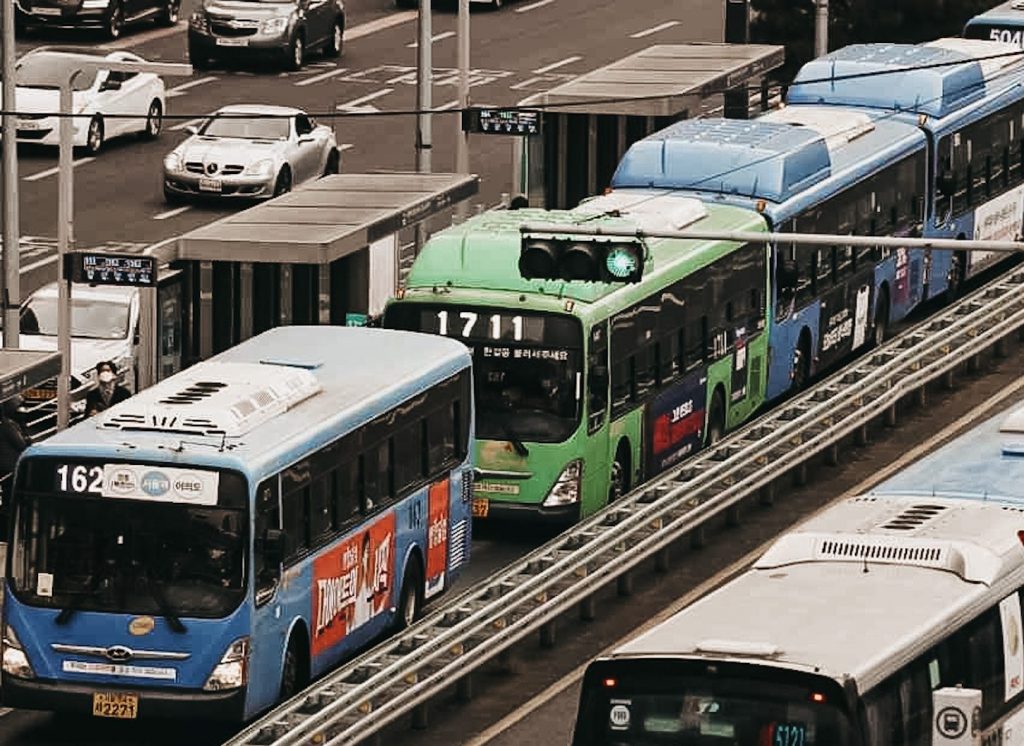
Good to know: Seoul Buses are color coded. The red buses are going out of the city (e.g. Incheon or other regions in Gyeonggi Province), the blue ones connect different districts within Seoul, green buses mostly stay within the same district and the very tiny yellow ones are local buses making small loops around a neighborhood.
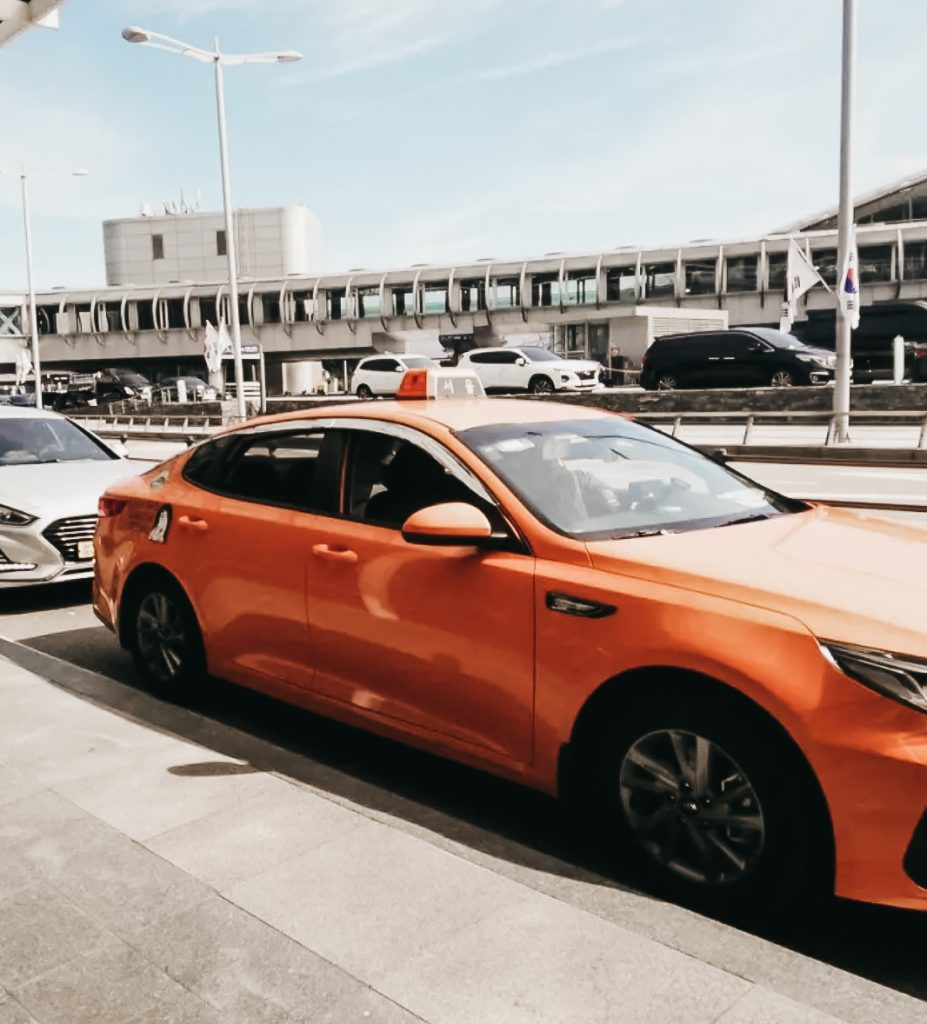
Taxi
Taxis are comparably cheap in South Korea, so I’m taking a taxi way more often than in Europe. The basic fare of a general Taxi is 4,800 KRW and then the taximeter will keep track of the kilometers travelled.
To grab a Taxi you can either wait on one of the Taxi Stands at big train or bus stations and around the main tourist attractions, use the app KakaoT or simply hail one off the street by raising your hand. Different than in most other countries, the RED sign saying “빈차” in the window of the taxi symbolizes that it is free. Green is taken and blue is done with work for the day, so avoid those.
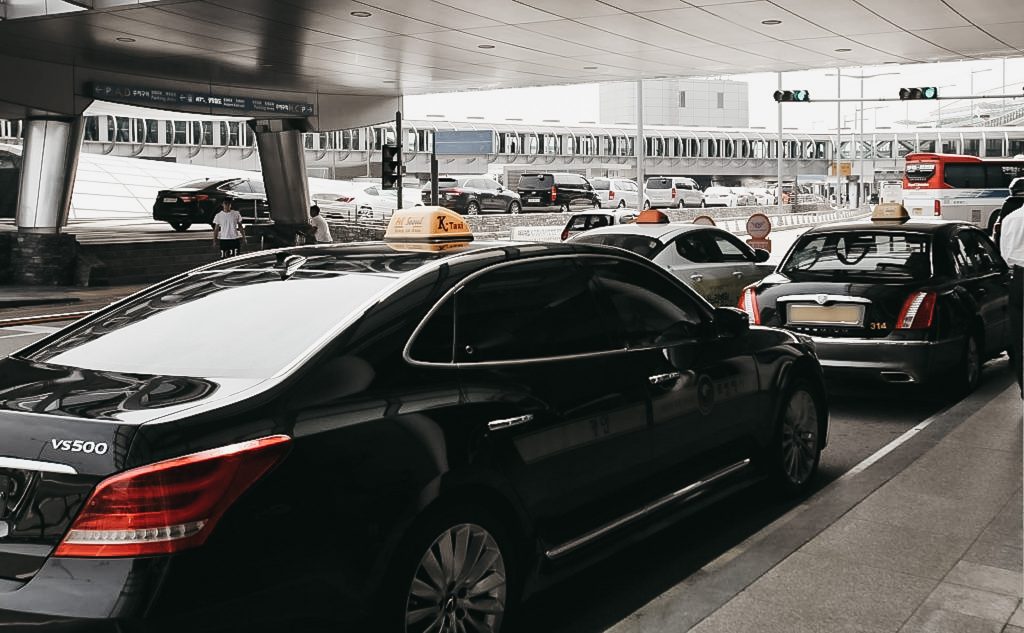
Like I mentioned in my >Airport Transportation Guide, I recommend you to avoid the black private or “Deluxe” Taxis as they usually offer similar services to normal taxis but for a much higher price. General orange or white taxis are my go to choice^^
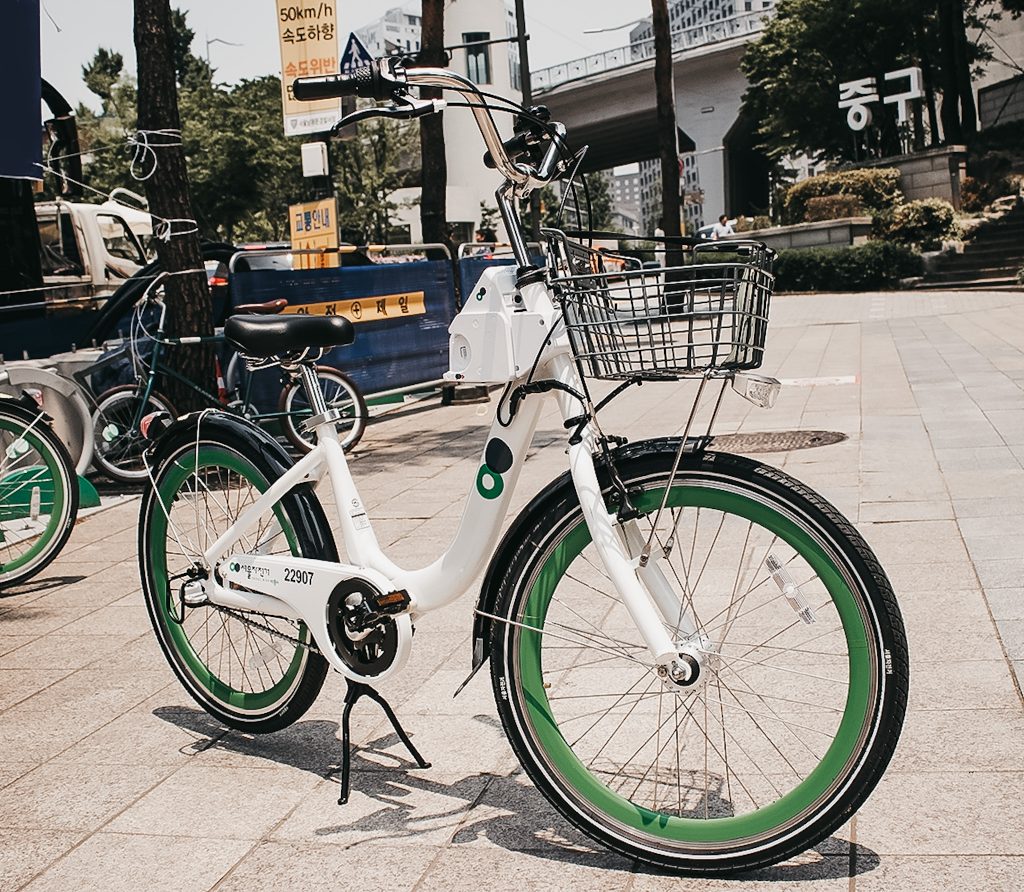
Bike
The “Seoul Bike” system – called 따릉이 (Ddareungi) – offers a unique and eco-friendly way to explore the city. With a convenient app and a well-organized network of rental stations, it’s easy for both locals and visitors to hop on a bicycle and pedal through Seoul’s vibrant streets. The bikes are not only convenient but also affordable, so you can literally see the green white bikes so often on the street or along the Han River.
Transportation to other cities
While Seoul offers a vibrant and bustling urban experience, I highly recommend travelers to venture beyond the city limits to truly immerse themselves in the rich tapestry of South Korean culture and landscapes. Take a short train or bus ride to discover the country’s hidden gems. By venturing out of Seoul, you’ll unlock a deeper understanding of South Korea’s diverse heritage and natural beauty, creating unforgettable memories along the way.
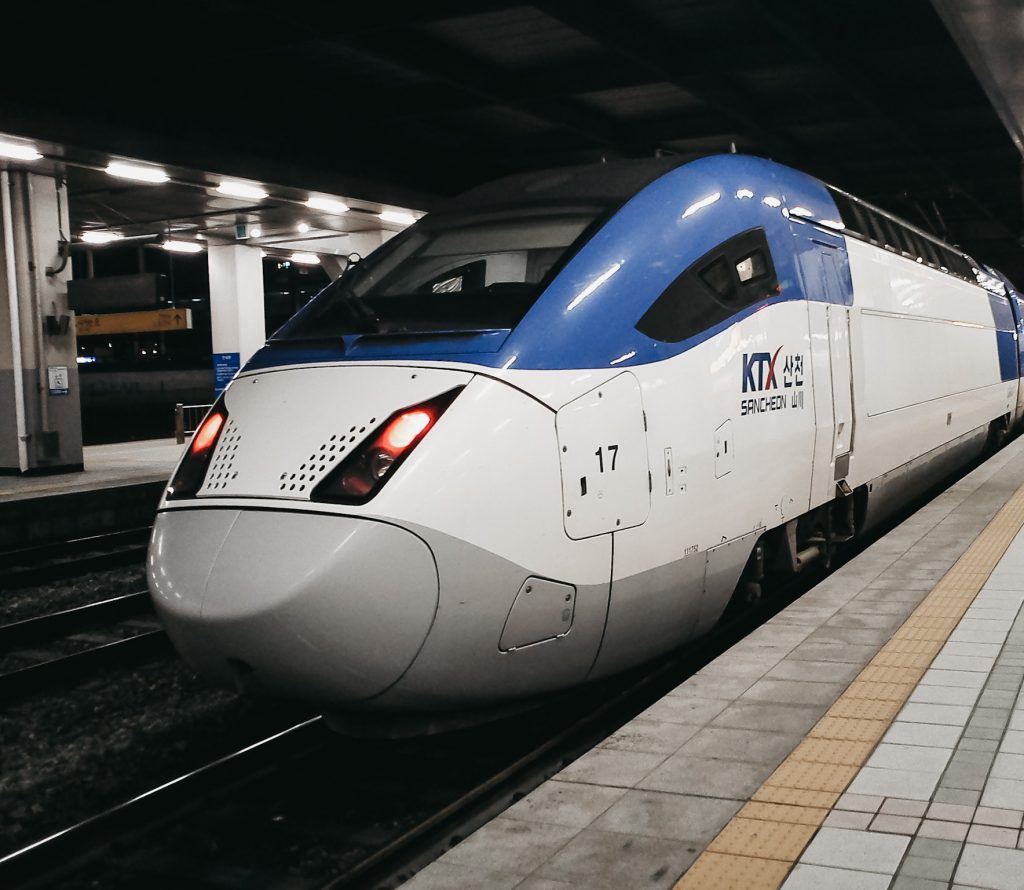
Train
The high-speed KTX trains are the stars of the show, bringing passengers to other major cities like Busan, Jeonju, Gyeongju or Daegu at speeds of up to 300 km/h (186 mph). The well-maintained rail network also includes slower, more scenic options, such as the Mugunghwa trains, which provide a leisurely journey through picturesque landscapes making stops at smaller cities too. Korail App oder Pass
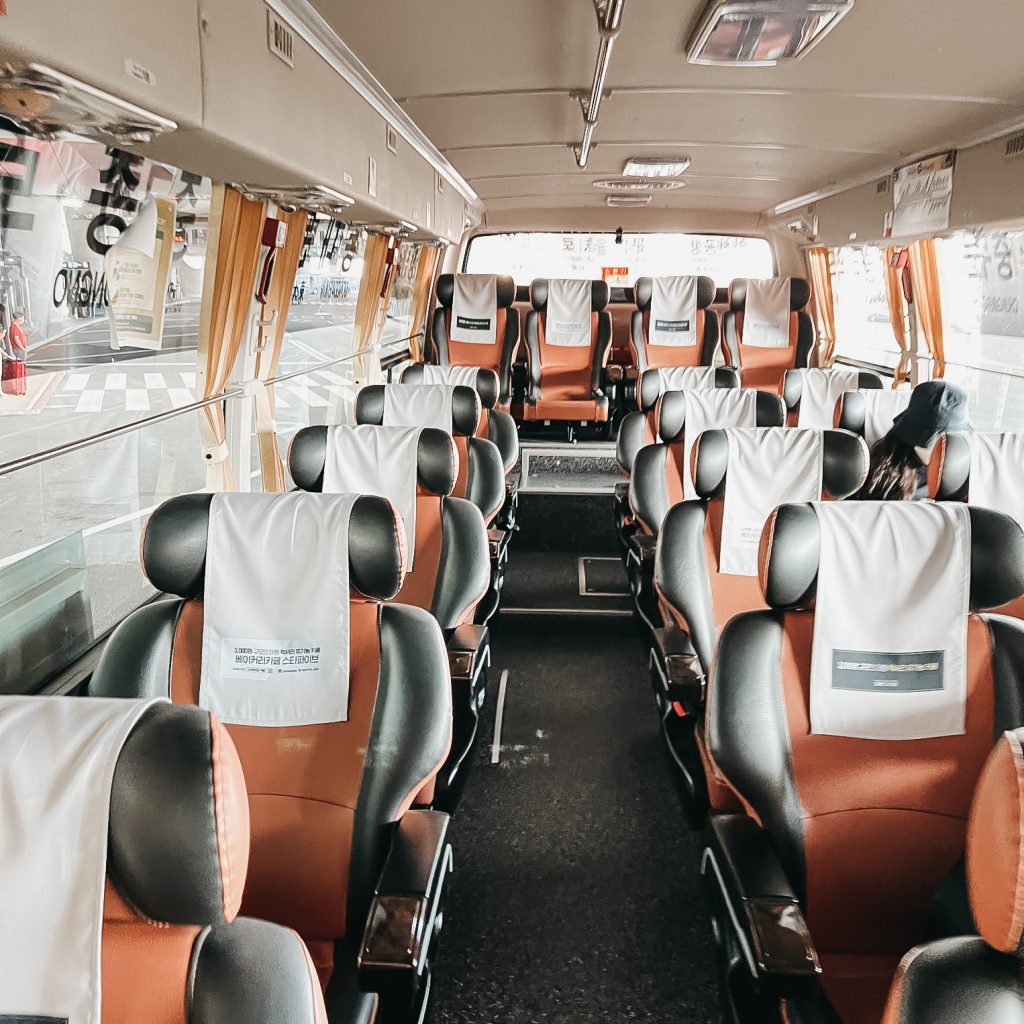
Express Bus
Express buses in South Korea are a convenient and affordable way to traverse the country’s diverse landscapes and reach destinations beyond the bigger cities. These comfortable, long-distance coaches offer a well-organized network that connects urban centers to charming rural areas and scenic countryside. The buses are equipped with modern amenities, ensuring a pleasant journey with features like Wi-Fi, spacious seats, and on some routes even onboard restrooms.
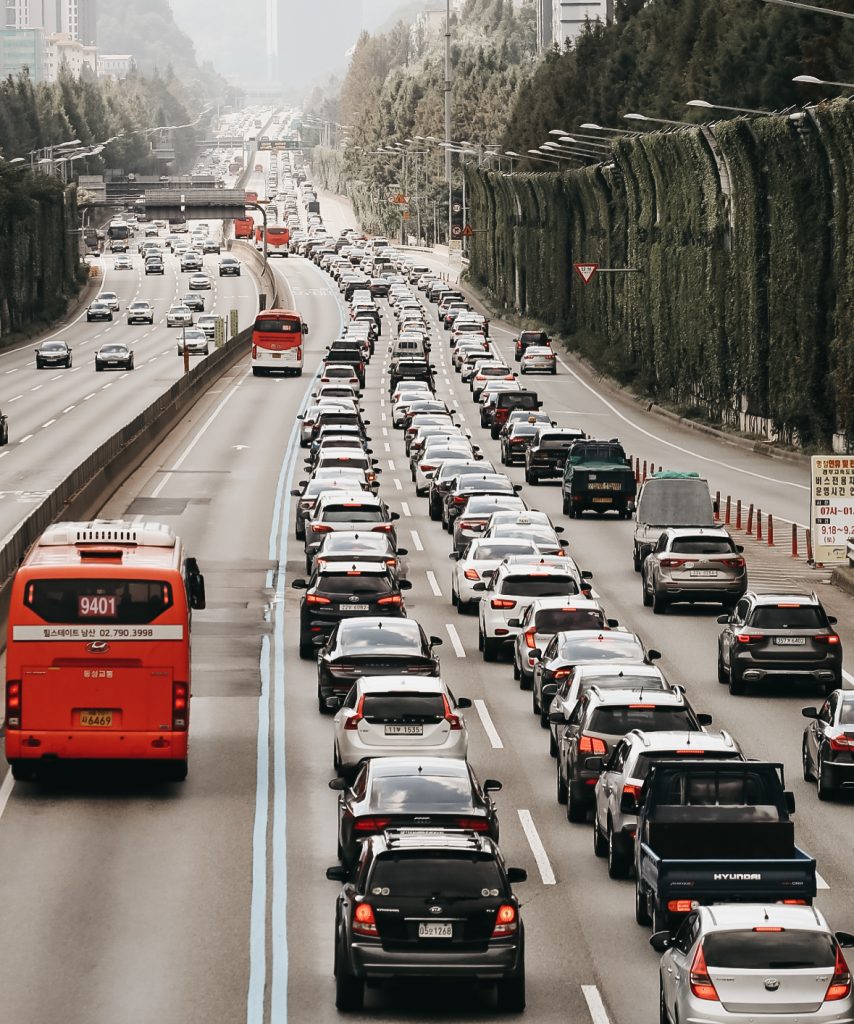
Rent Car
Within Seoul: Absolutely not recommended! Driving in and close to Seoul is definitely challenging and stressful due to the insane traffic and parking availability. I would only recommend it to very experienced drivers, but even then I would avoid it on all costs 😀
Going out of Seoul? Totally fine and a fun way to see more of the country’s stunning landscapes. Especially on Jeju Island or if you’re going to a rural area a Rental car is highly recommend to stay flexible and comfortable.
NEXTSTOPKOREA TIP: I usually book my rent cars for anywhere in South Korea via >Klook.com or directly via >Lotte Rentcar. Please be aware that you usually need an international drivers license (on Klook some one except Korean licenses, so check that well) and the credit card that was used when making the booking.
EXPLORING
Now that you know how to get around the city and country, here some places I recommend you to visit or activities that will help you experience real Korean culture during your trip.
Must see Places in Seoul
If you travelled a lot you probably learned one thing: You can never see everything! I lived in Korea for 2 years now and still there are so many places on my bucket list.. it’s a never ending story!
So when you come to South Korea, I would recommend you to see some of the “Must Sees” that are tourist hotspots for obvious reasons and mix it up with unique experiences and hidden gems. Here a list of the most famous places in Seoul:
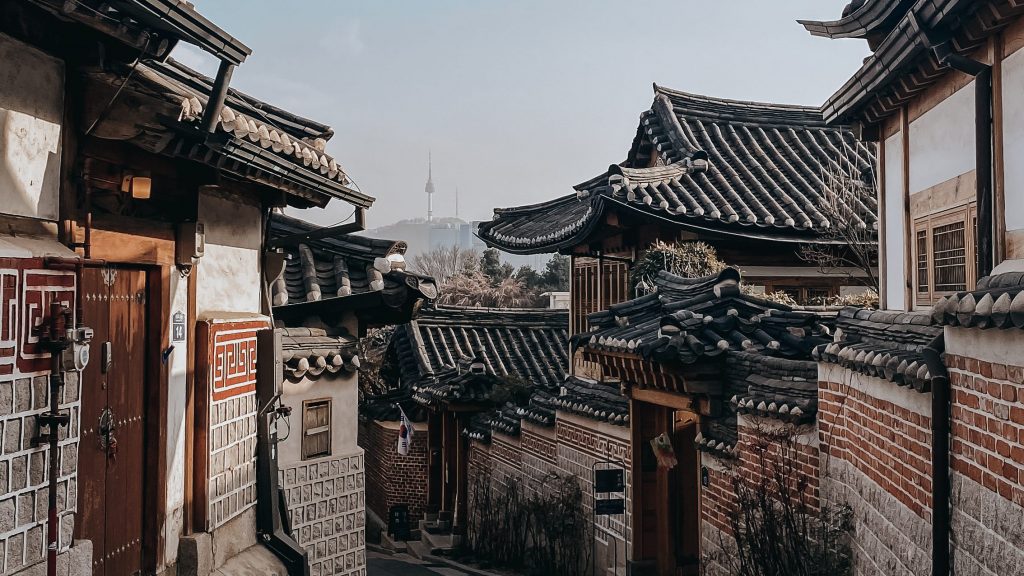
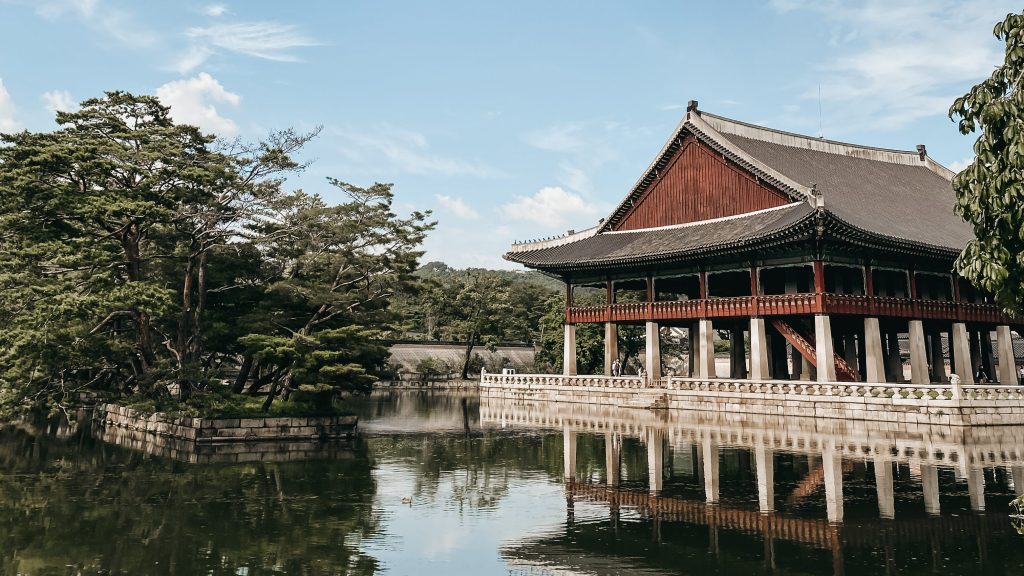
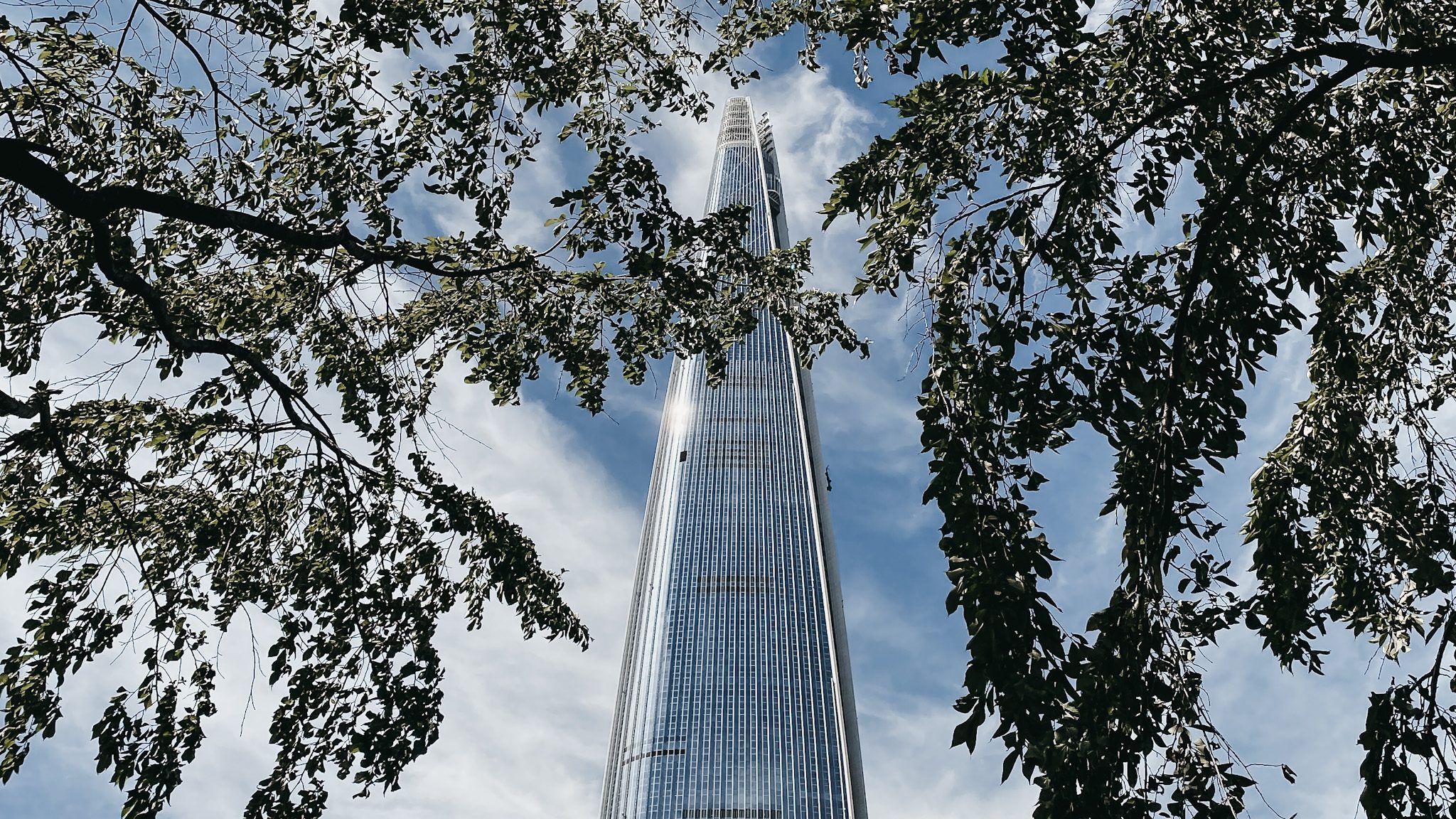
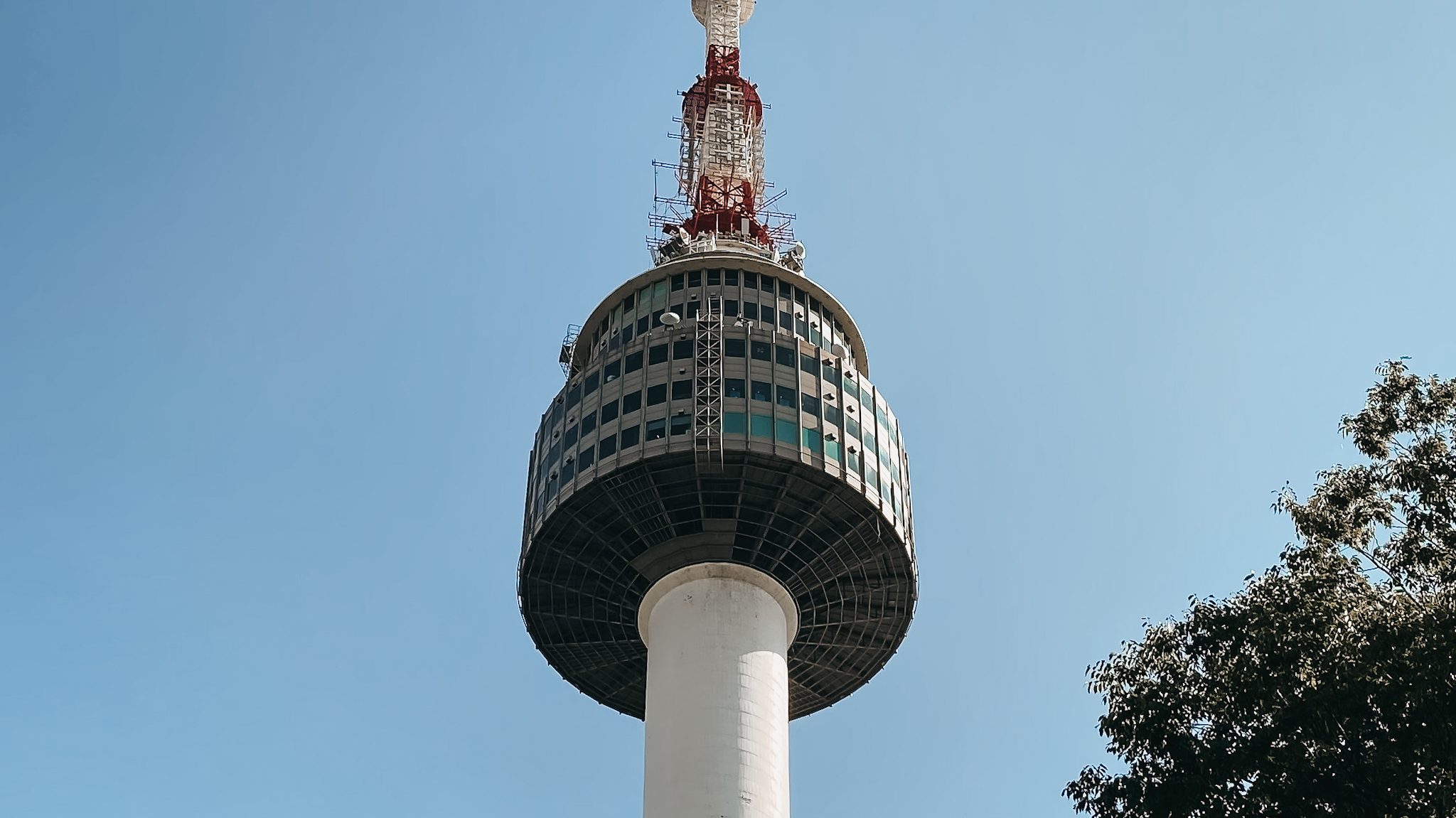
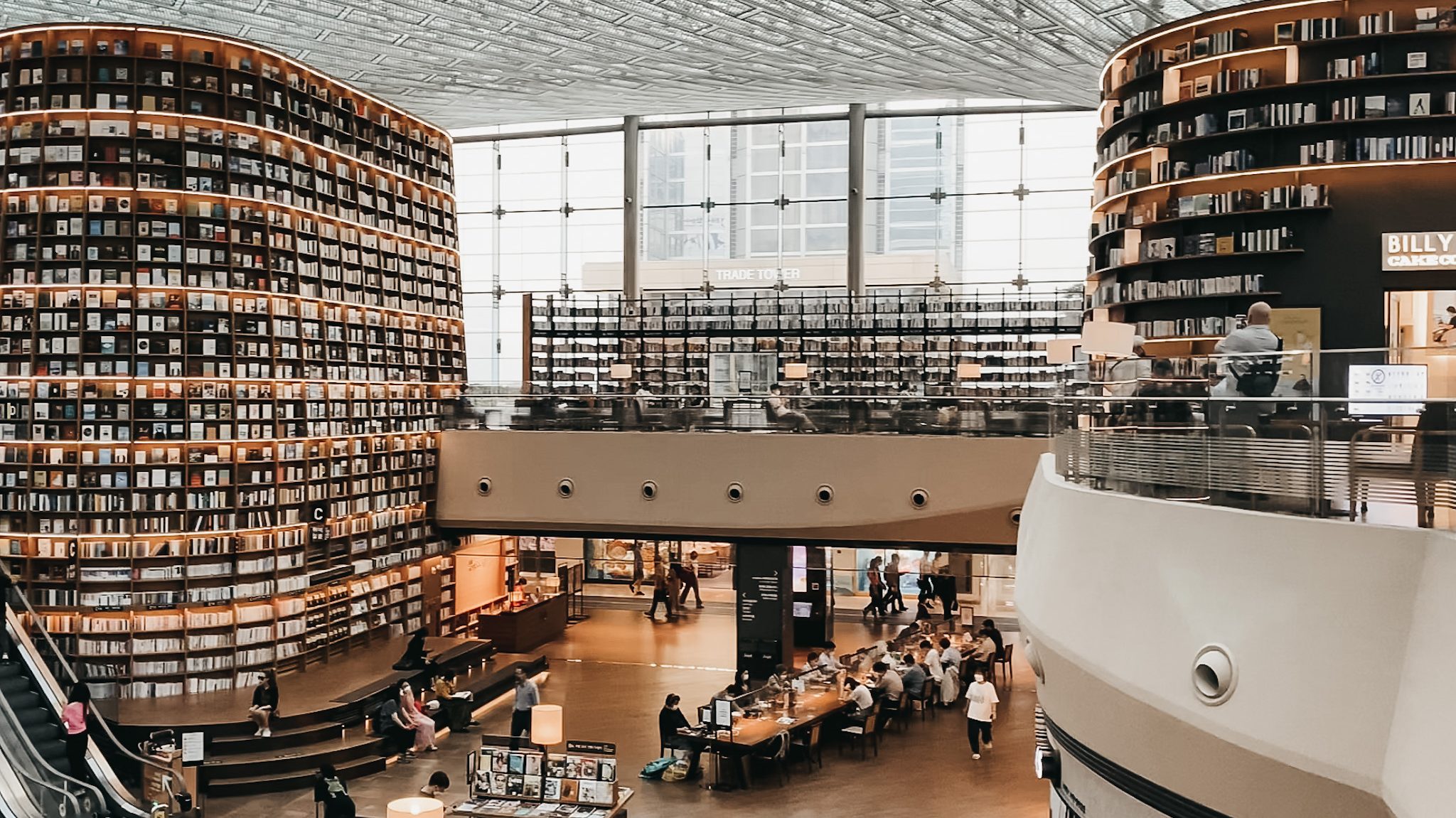
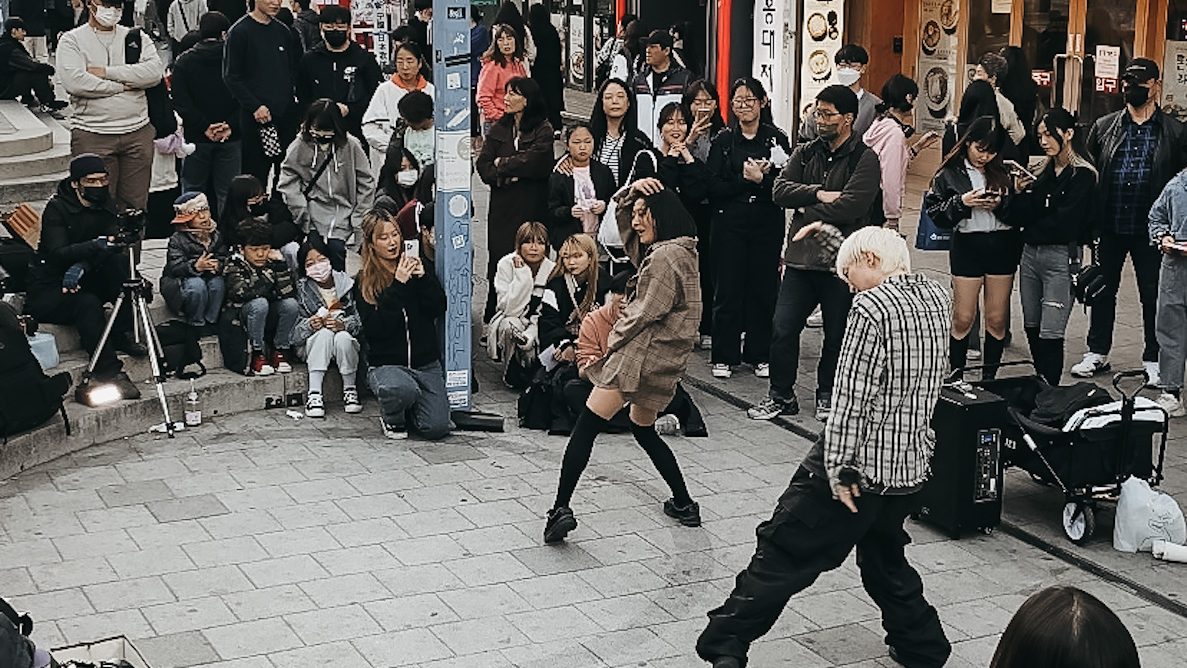
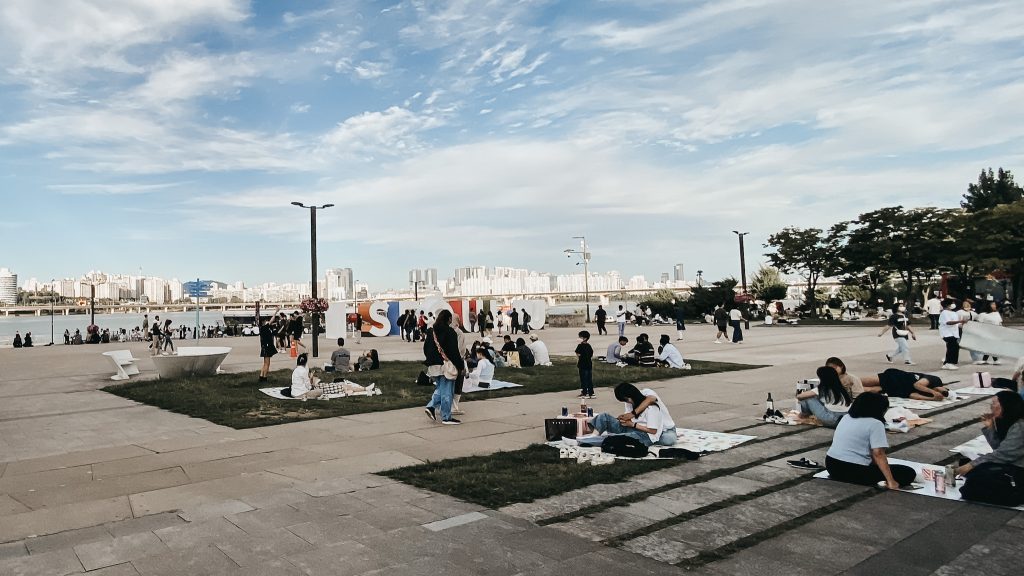
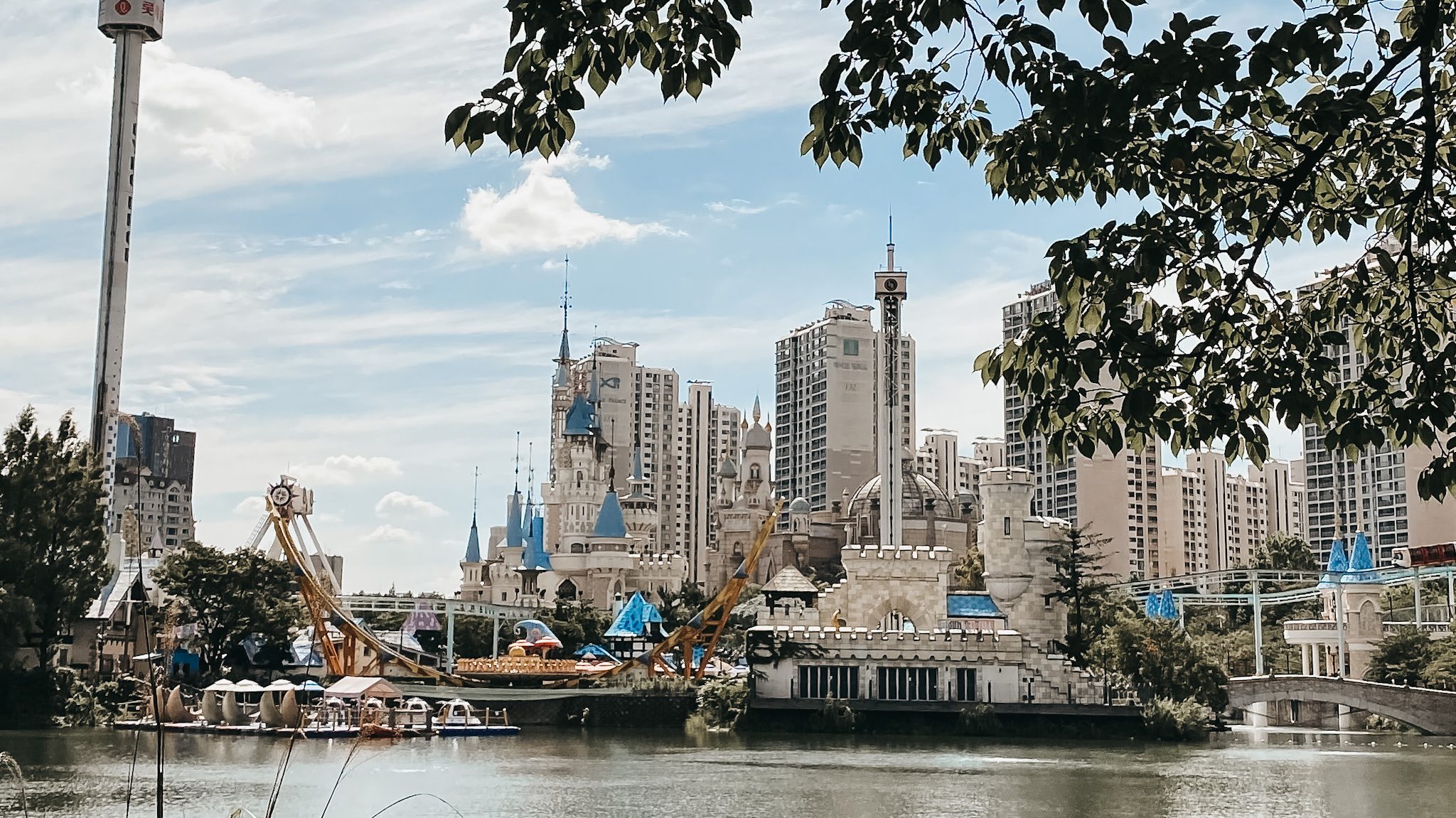
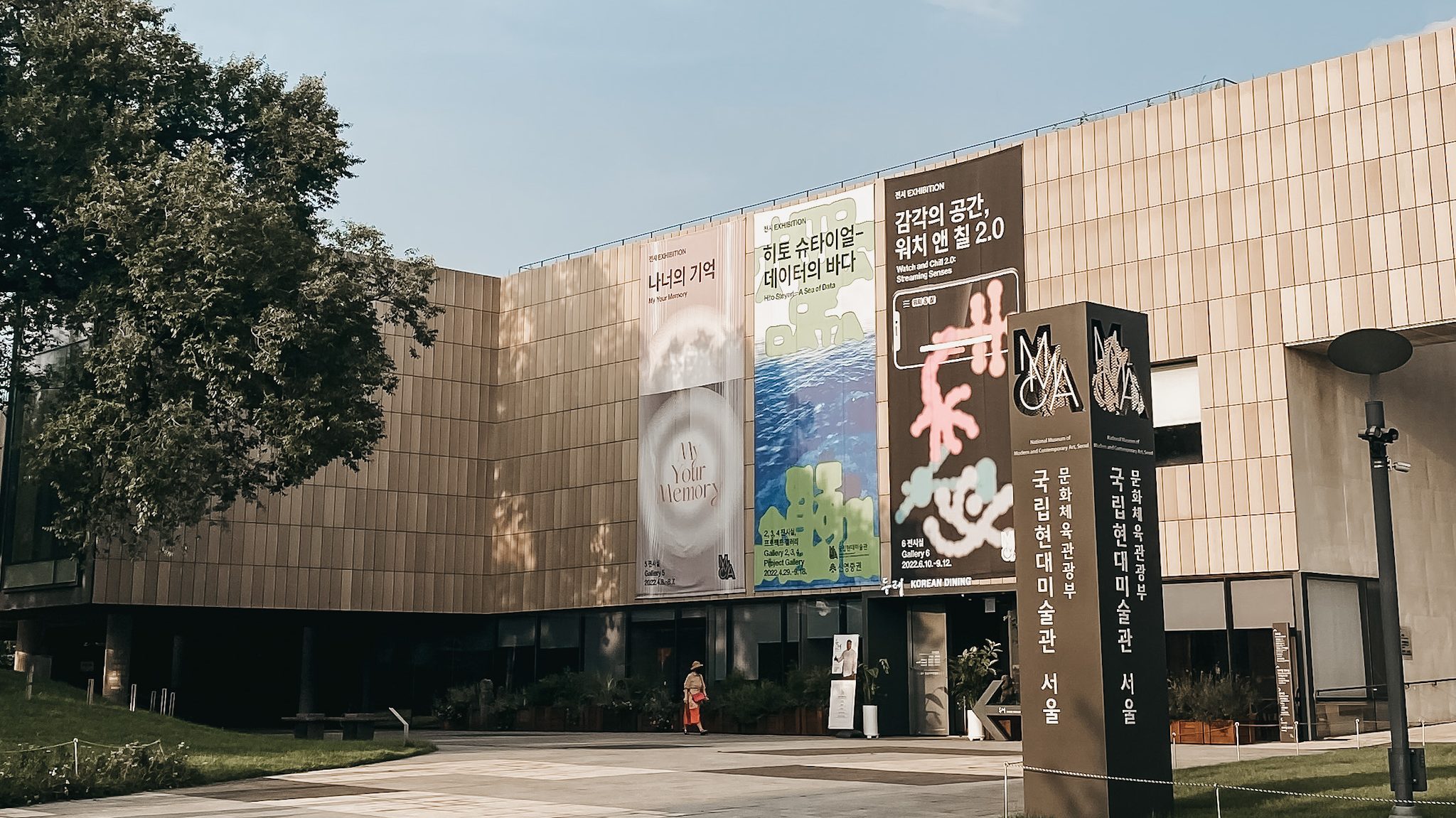
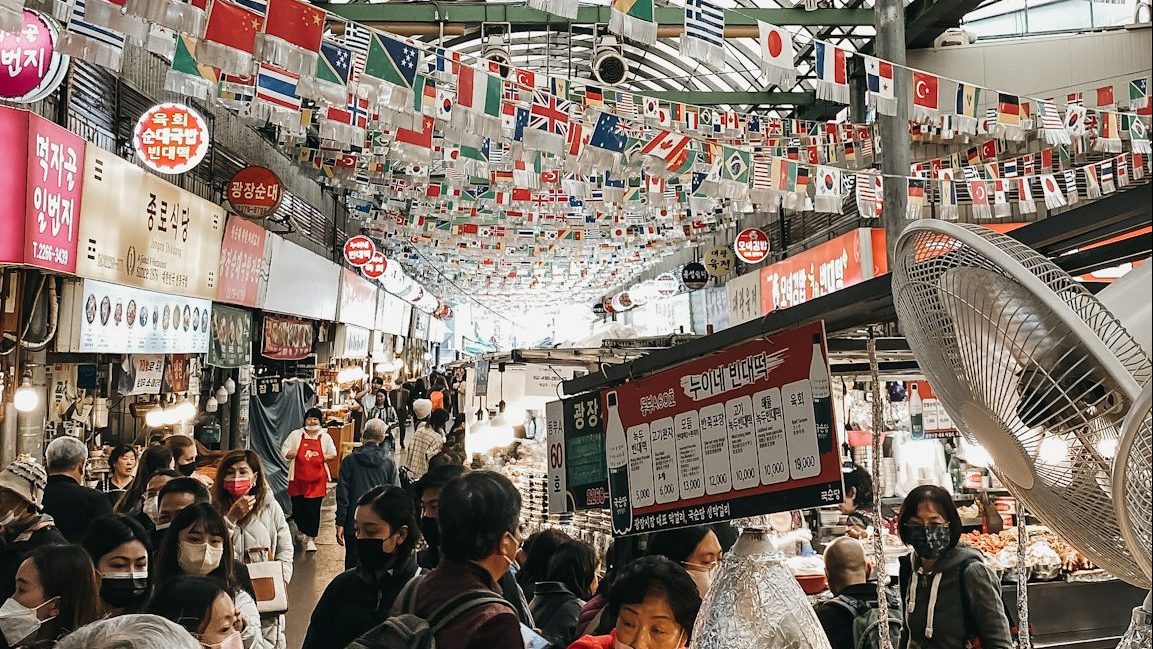
Alternatives
If you are looking for some Alternatives to the main tourist spots mentioned above, here some less famous and a bit less crowded recommendations:
- Tongin Market
- Namsangol Hanok Village
- Deoksugung Palace Changgyeonggung Palace
- Bongeungsa Temple
- Gyeonggui Line Forest Park
- Eunpyeong Hanok Village
- Euljiro Pocha Street
- Jeongdong Observatory
- Ssamziegil Insadong
- Changdeokgung Palace
- Seoul Forest
- Ihwa Mural Village
- Ansan Mountain
- Sejong Village
- Blue House (Cheong Wa Dae)
- Seoullo 7017
- Cheonggyecheon Stream
- Nodeul Island
- Haneul Park
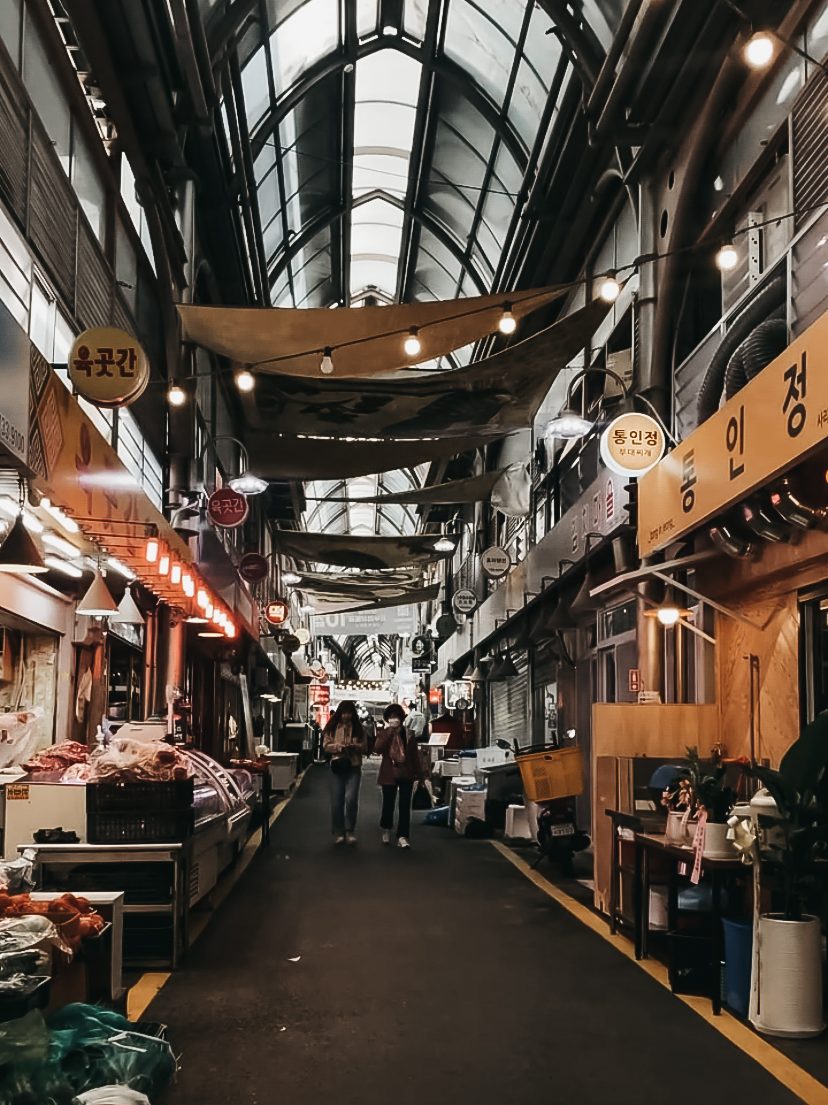
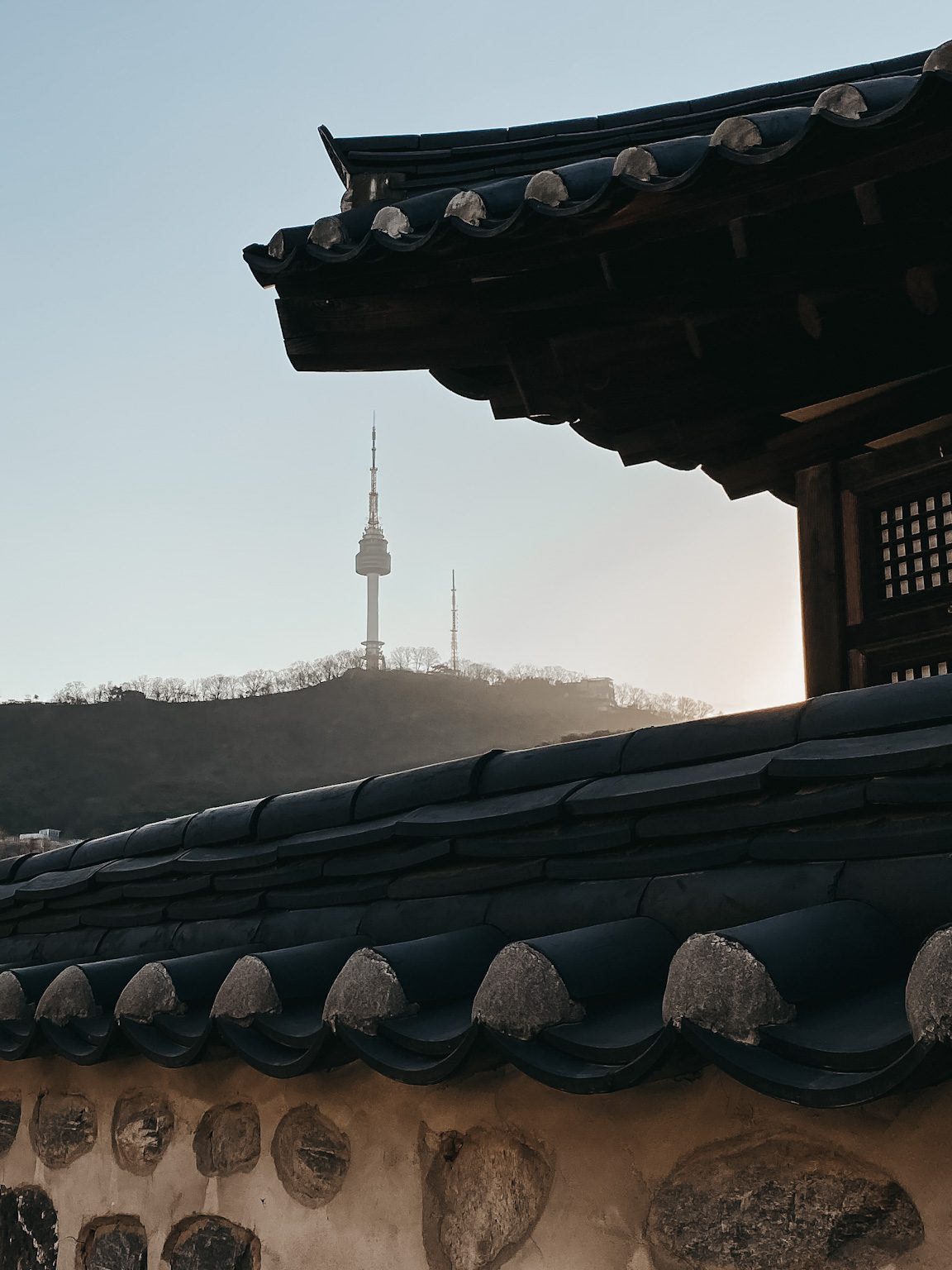
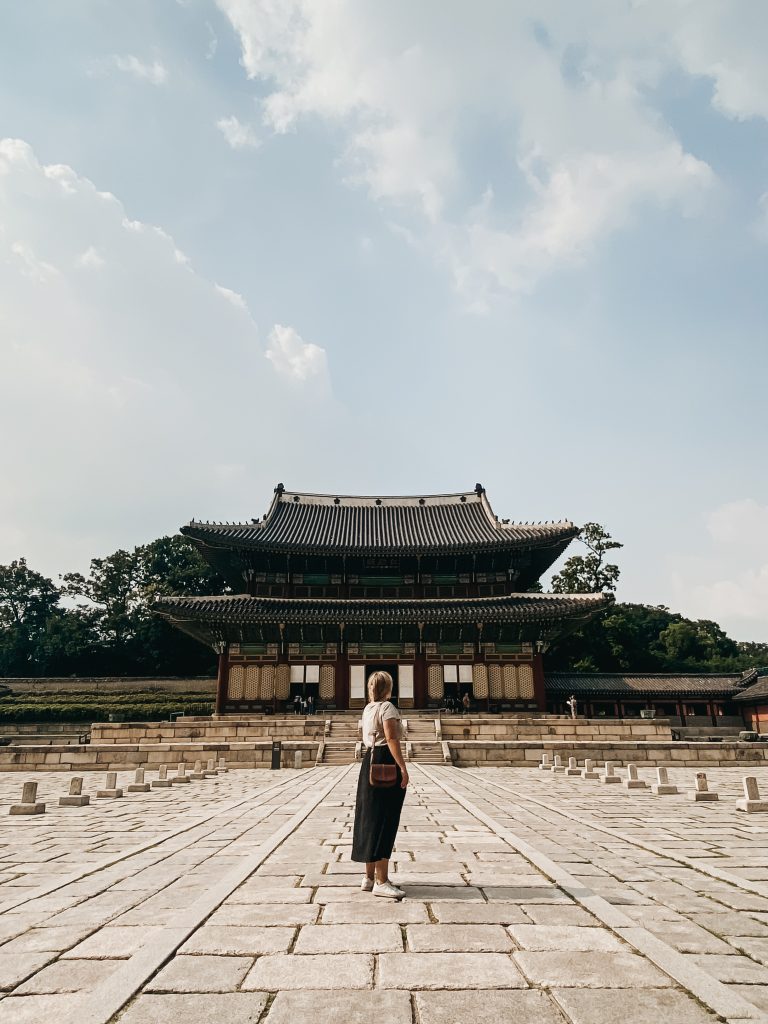
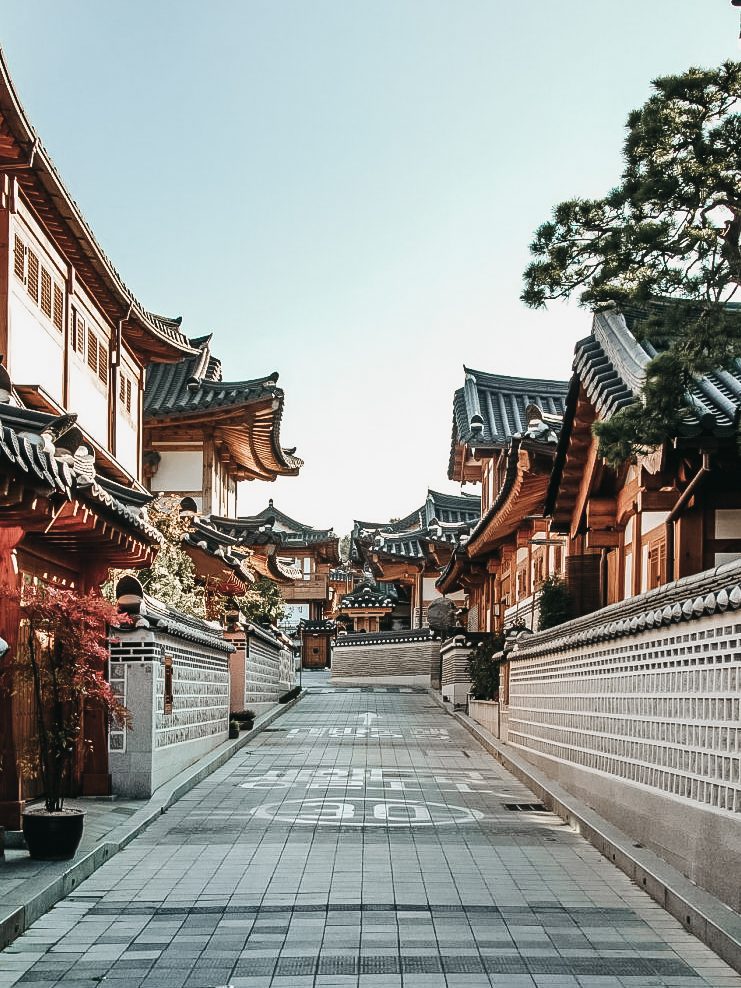
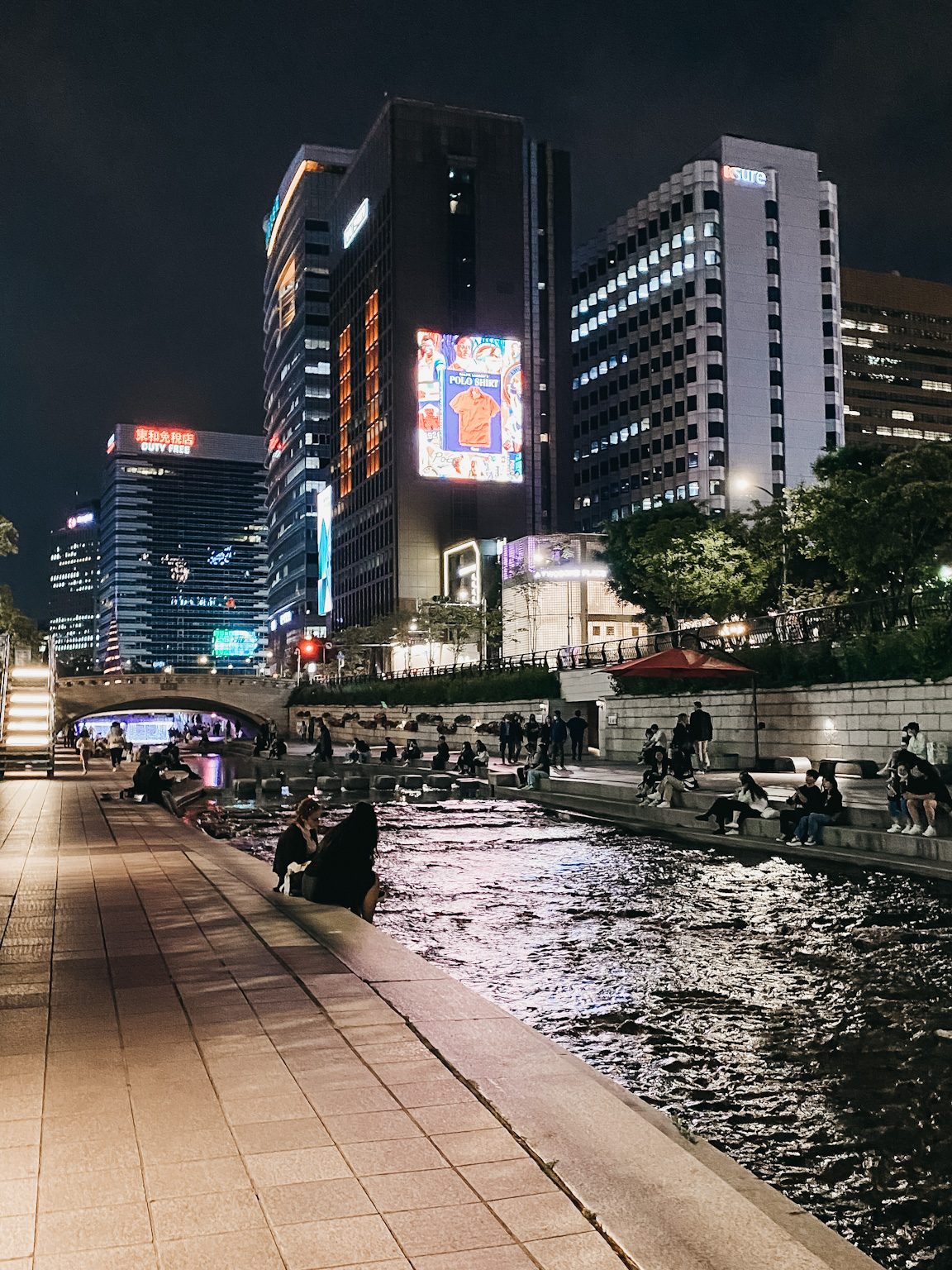
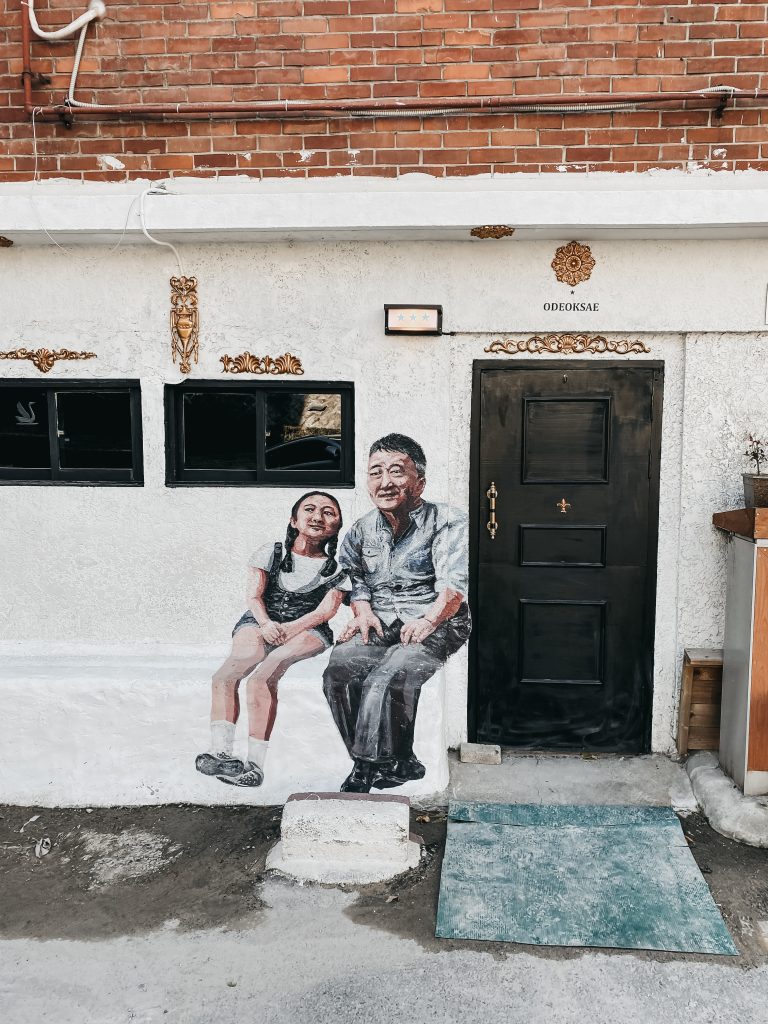
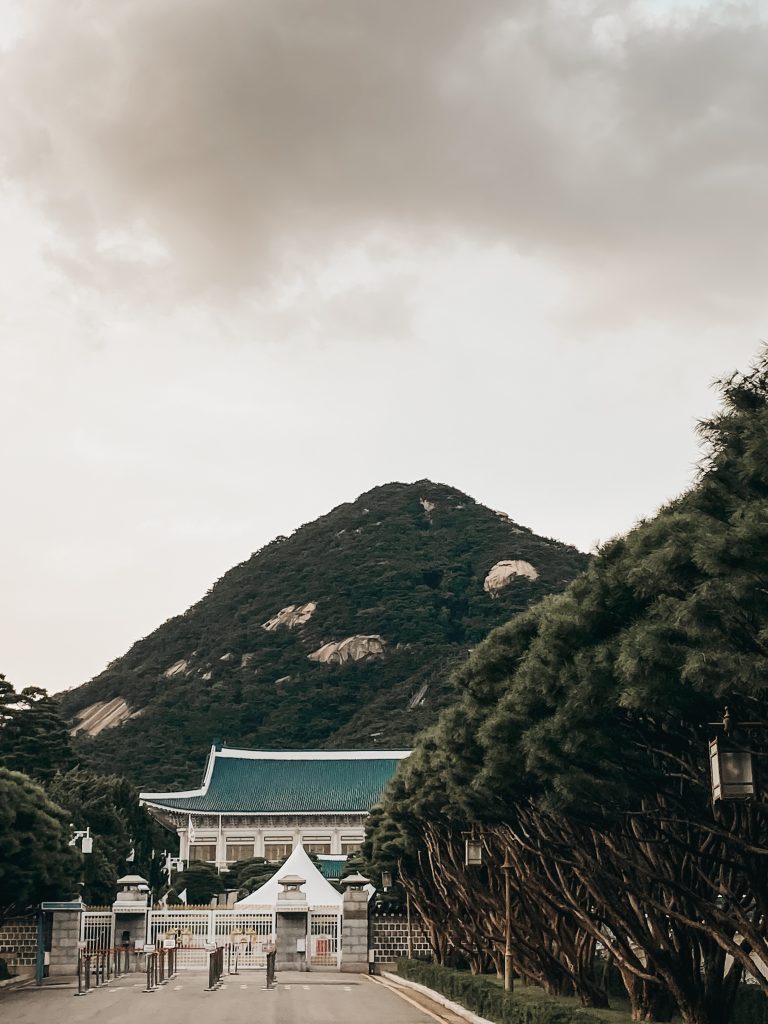
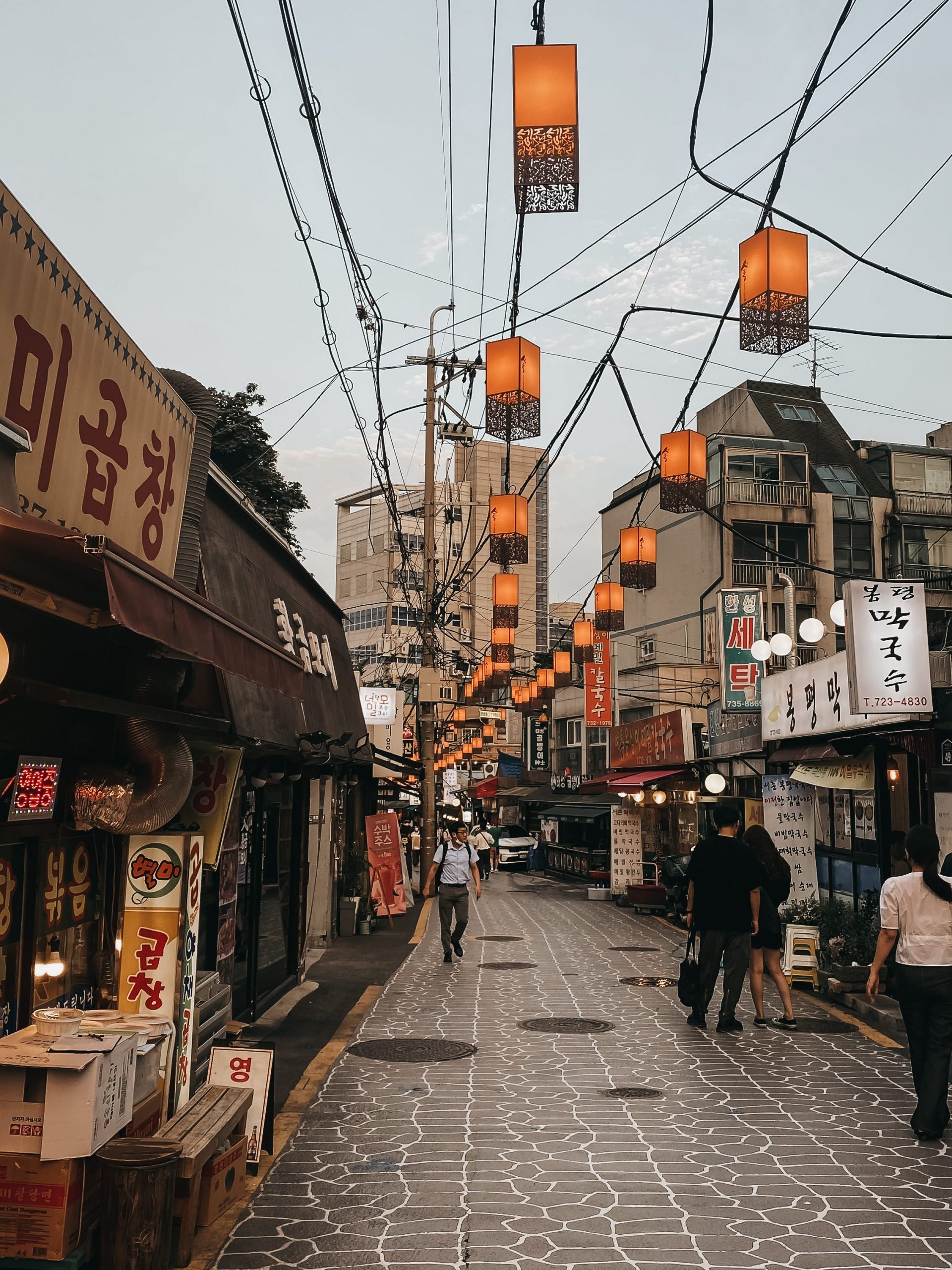
Must do Activities
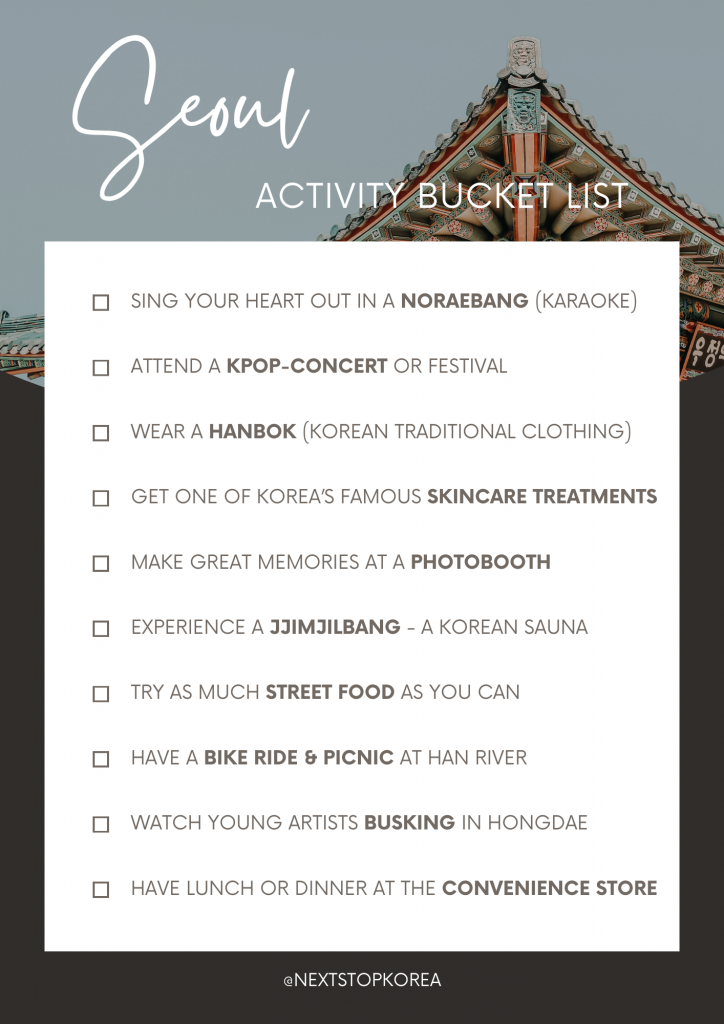
Other places out of Seoul
Even after 2 years I have an endless bucket list of places I want to visit in this country. Here 10 of my favorite trips from Seoul either short One-Day-Trips or longer journeys if you have enough time:
- DMZ Tour: Take a guided tour to the Demilitarized Zone (DMZ) to understand the divided history of North and South Korea. Please keep in mind, that many DMZ Tours do not include the most famous part – the Joint Security Area (JSA) – but they are still very much worth a visit!
- Suwon: Explore the impressive Hwaseong Fortress in Suwon – designed in the late 18th century to defend the city – and many other sights very close to Seoul City.
- Nami Island: Known for its natural beauty and tree-lined paths, Nami Island gained fame from K-Drama “Winter Sonata” but a tour to Nami Island is definitely recommend all over the year!
- Busan: Known for its stunning beaches and fresh seafood, this coastal city is a must-visit. It’s one of my favorite places in South Korea!
- Jeonju: A beautiful huge Hanok Village in the middle of the country especially recommended during Cherry Blossom, but also the rest of the year. Must Try: Jeonju Bibimbap & ChocoPie!
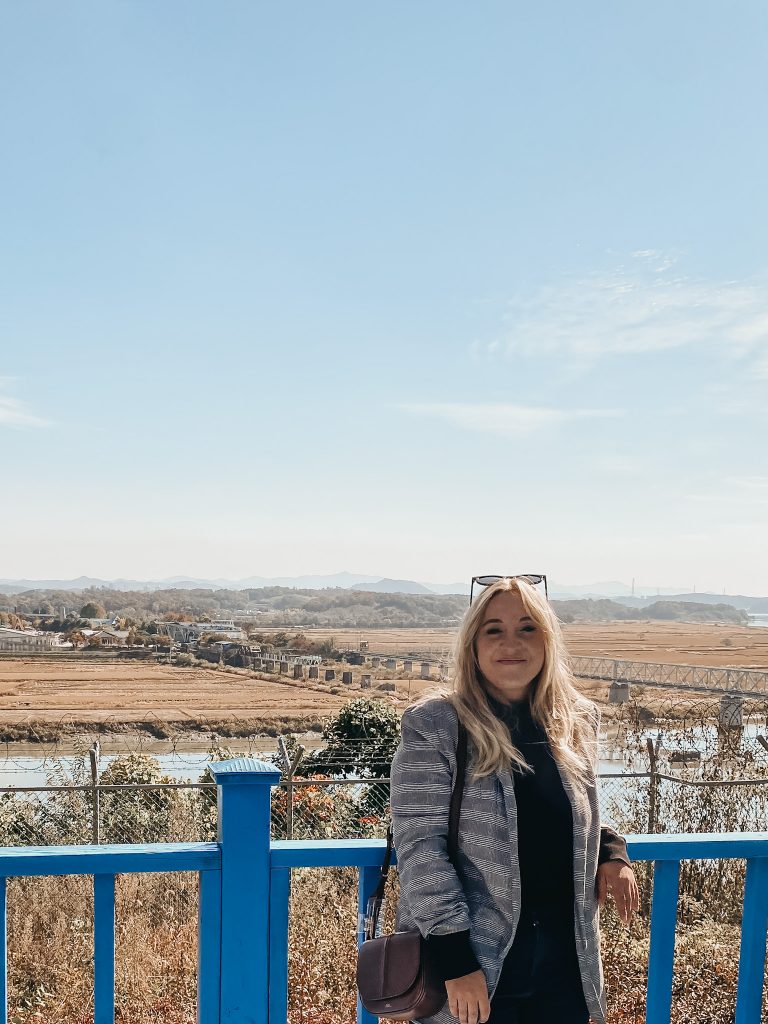
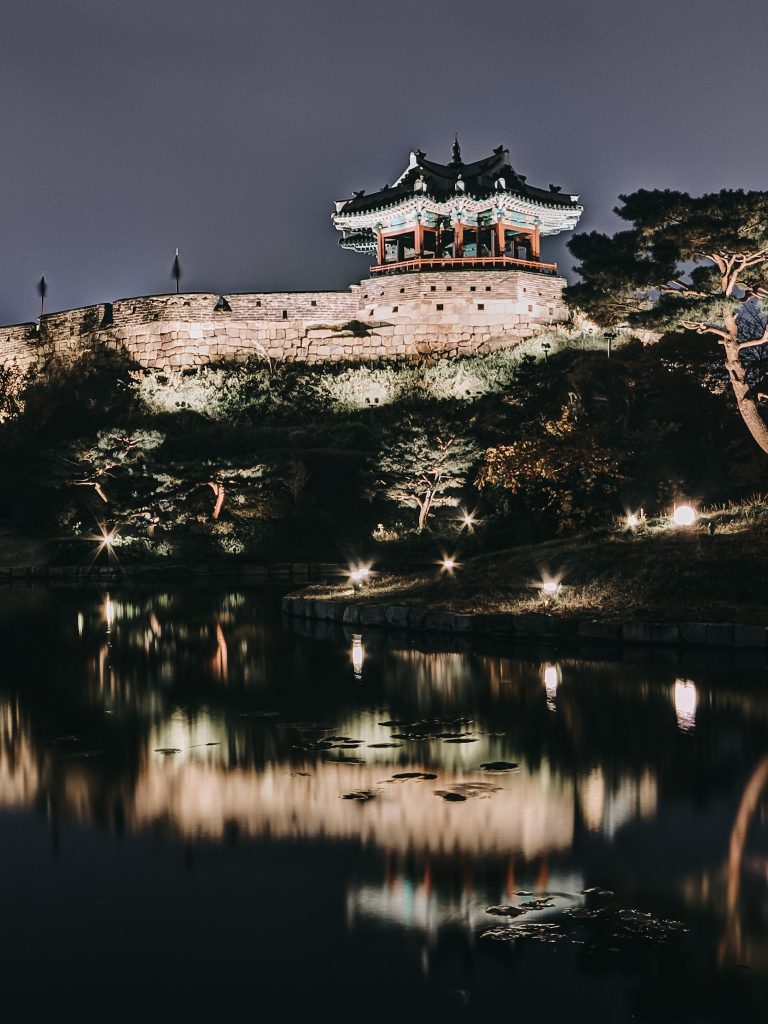

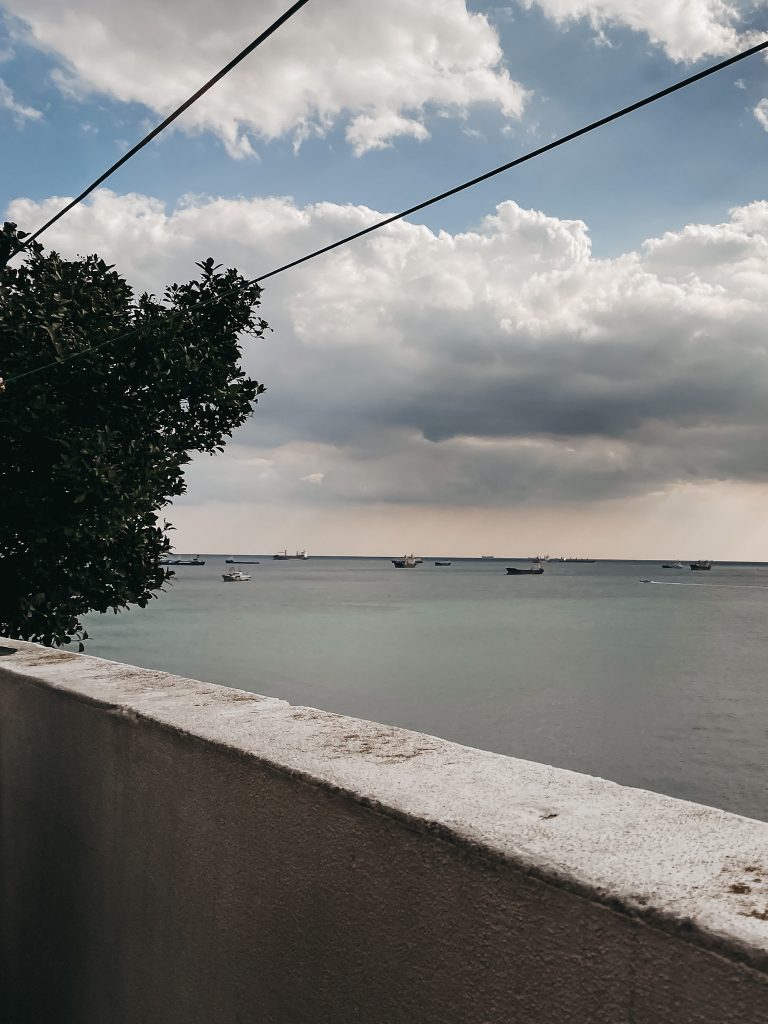
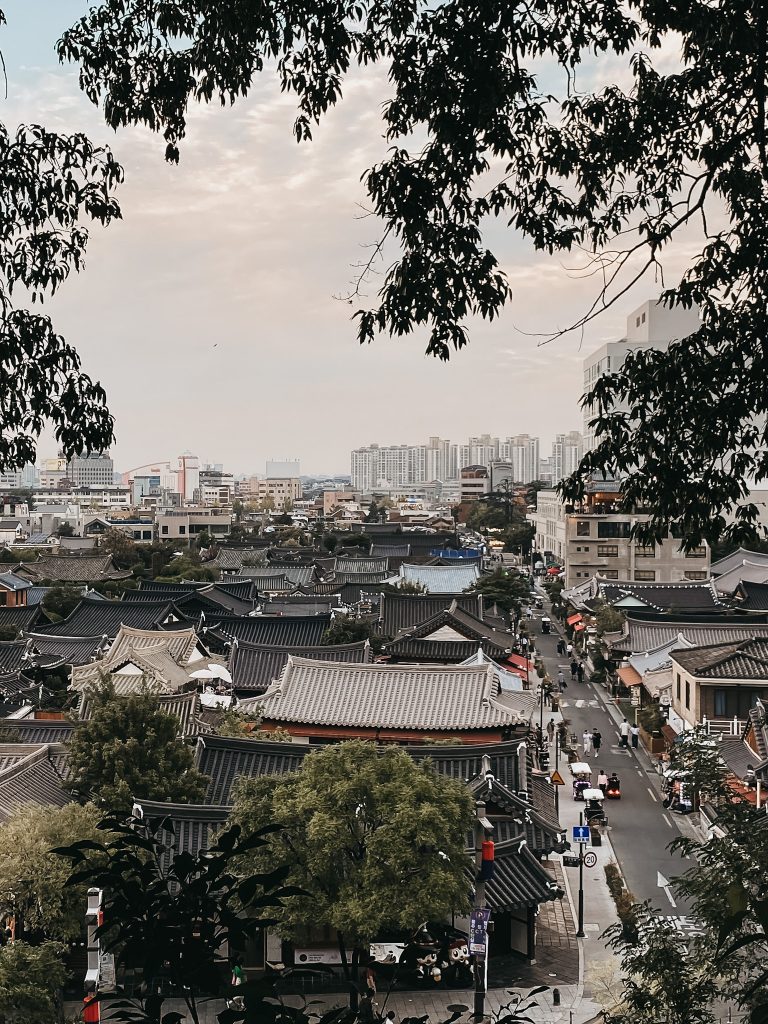
- Gangneung: Famous for Coffee and its stunning beaches this East Sea city is a perfect retreat from the crowded and hectic metropolis. Here a recommended tour!
- Danyang: My absolute top recommendation but unfortunately there are not many organized group trips yet. If you’re in to plan it yourself, this is one of the most beautiful spots to visit! (Combine it with the close by city Jecheon for a 2-3 day trip)
- Gyeongju: Often referred to as the “Museum Without Walls,” Gyeongju is a UNESCO World Heritage site with ancient tombs, temples, and ruins.
- Jeju Island: A volcanic island with dramatic landscapes, waterfalls, and hiking trails. It’s a UNESCO World Heritage site and a popular travel destination. Here some organized tour recommendations.
- Yeosu: A picturesque coastal city on the southern coast of South Korea, is celebrated for its stunning natural beauty and the iconic Dolsan Bridge, which provides breathtaking views of the surrounding islands and clear blue waters.
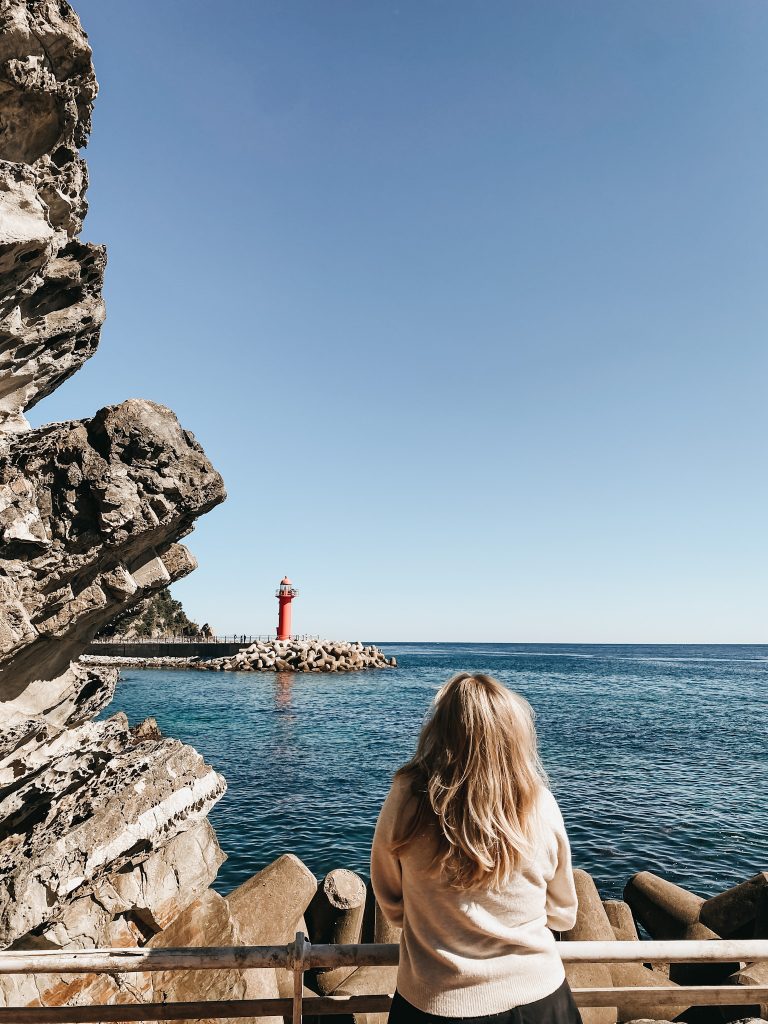
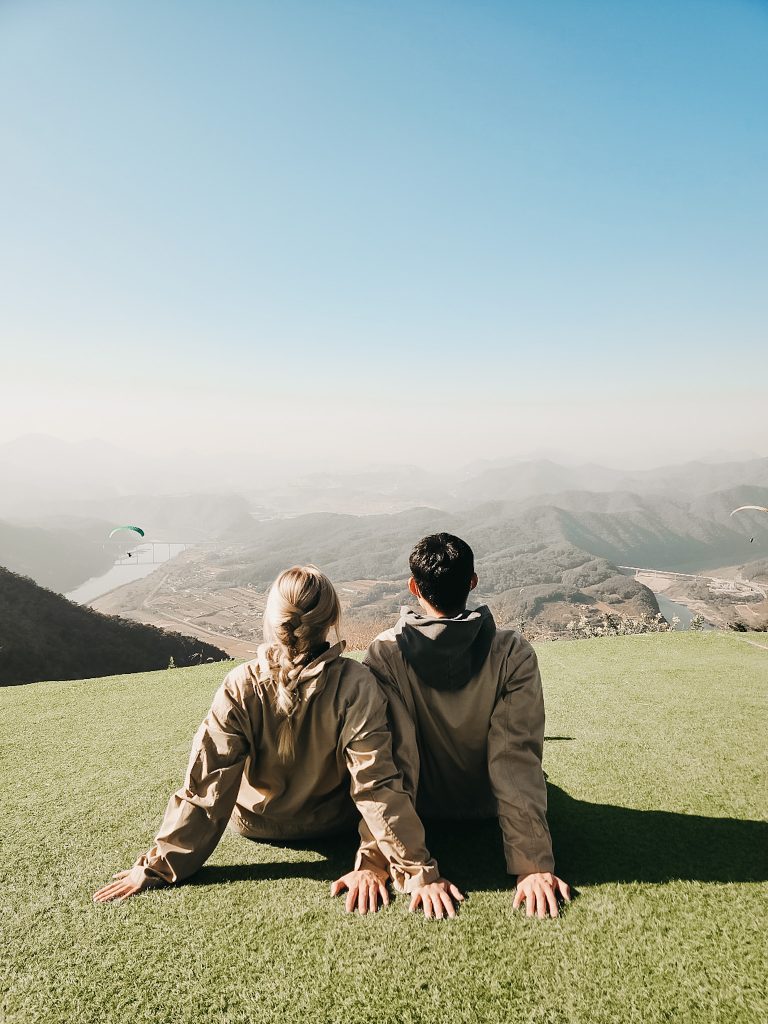
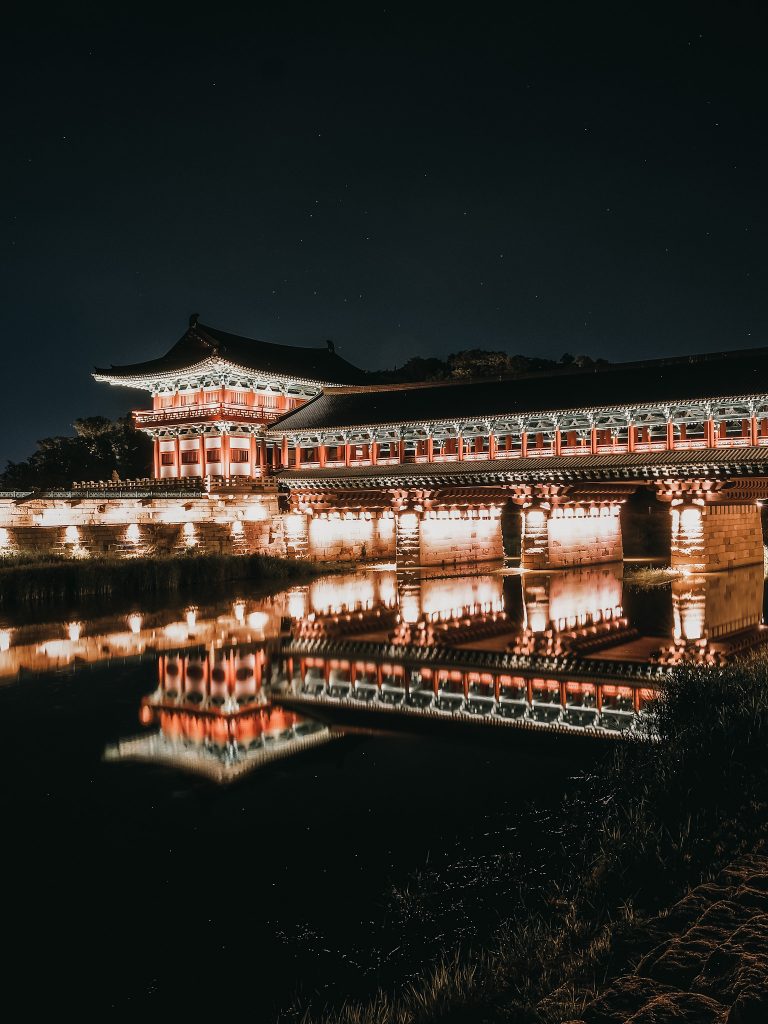
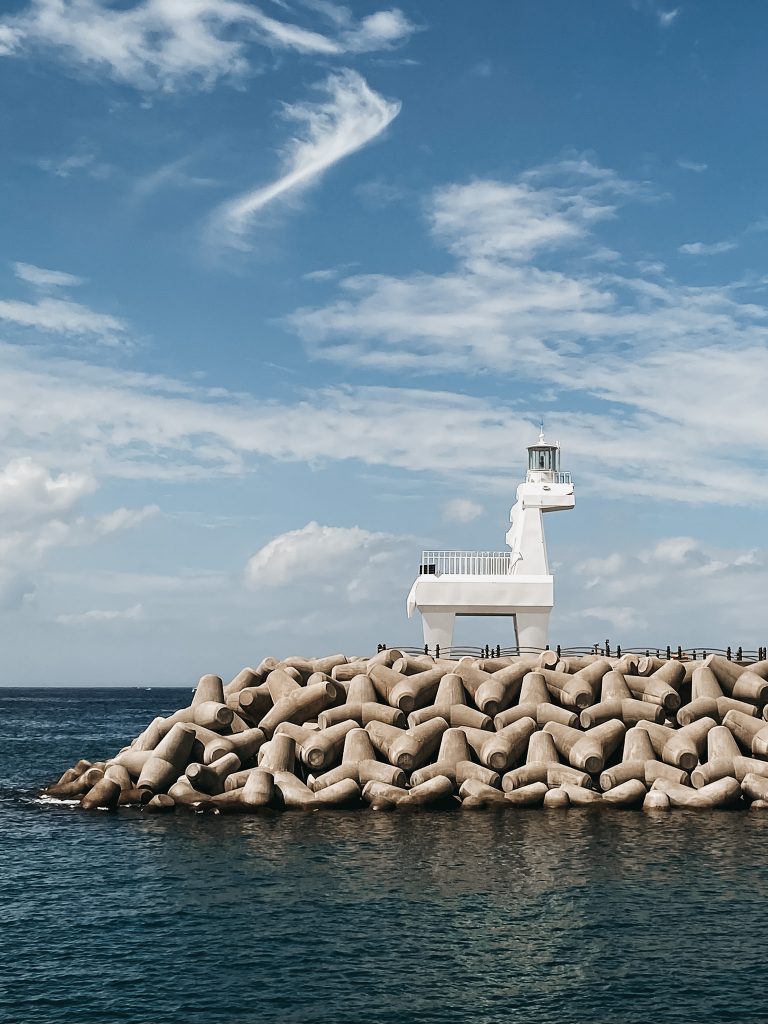
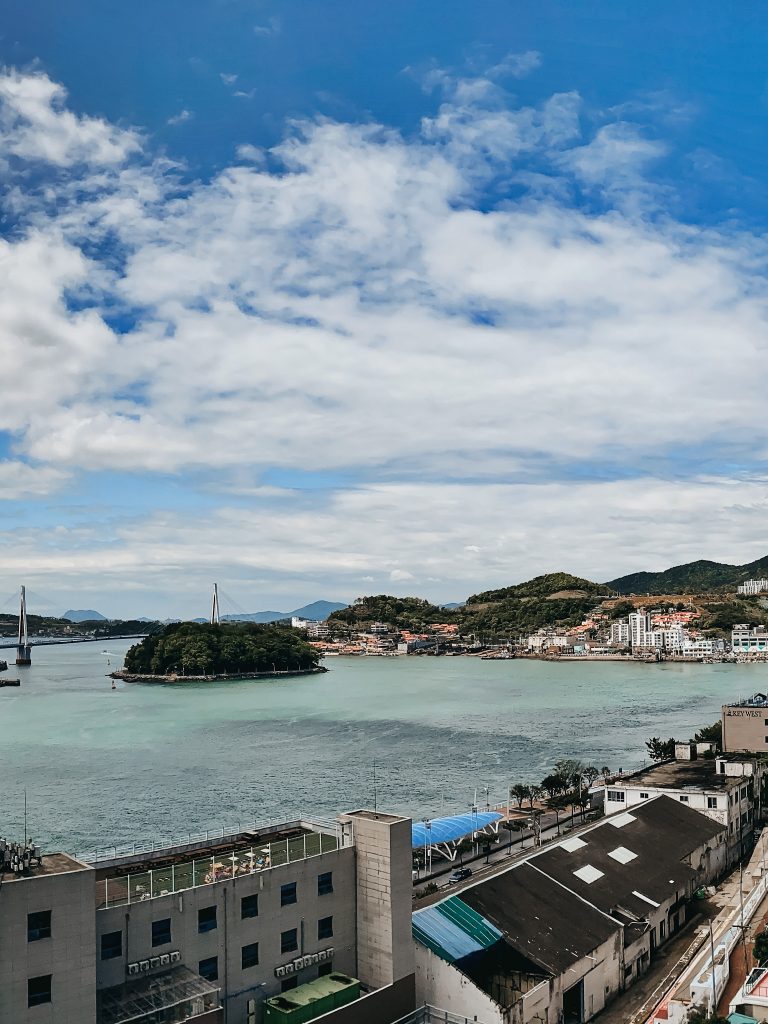
Festivals
Korea is renowned for its diverse and colorful festivals, which celebrate everything from ancient traditions, contemporary art to korean pop music, providing visitors with unique cultural experiences throughout the year. Here some examples of the most popular festivals per month:
- Chilgapsan Ice Fountain Festival: Snow and Ice Sculptures, grilled potatoes and the best part: a completely frozen waterfall (January)
- Jeongwol Daeboreum Fire Festival: Marks the first full moon of the lunar year with fire-related activities. (February)
- Gwangyang Plum Blossom Festival: 200,000 square metres of plum trees near the Seomjin River, in an area known as Maehwa Village in Gwangyang. (March)
- Cherry Blossom Festivals: Join locals in celebrating spring’s arrival with breathtaking cherry blossoms. Jinhae Gunhangje Festival is one of the most famous. (April)
- Buddhas Birthday Festivals: Lantern Displays, Big parades and my favorite: special temple stay offers in temples all over the country. (May)
- Gangneung Danoje Festival: Traditional festival featuring mask dances, rituals, and cultural performances. (June)
- Waterbomb Festivals: Big music festivals in every bigger city in Korea featuring fun water activities – water guns are a must to bring to cool down. (July)
- Boryeong Mud Festival: Enjoy mud-based activities, music, and fireworks at this unique and lively summer festival. (August)
- Andong Mask Dance Festival: Experience traditional mask dance performances, showcasing Korean folklore and culture. (September)
- Seoul Firework Festival: A stunning fireworks display along the Han River, accompanied by music and performances. (October)
- Geoje Island Flower Festival: Enjoy fall at its best on the beautiful island with this event full of flowers and activities for the family. (November)
- Lantern Festivals: Colorful lantern displays that illuminate the hearts of many cities in South Korea, the biggest one happens in Seoul. (December)
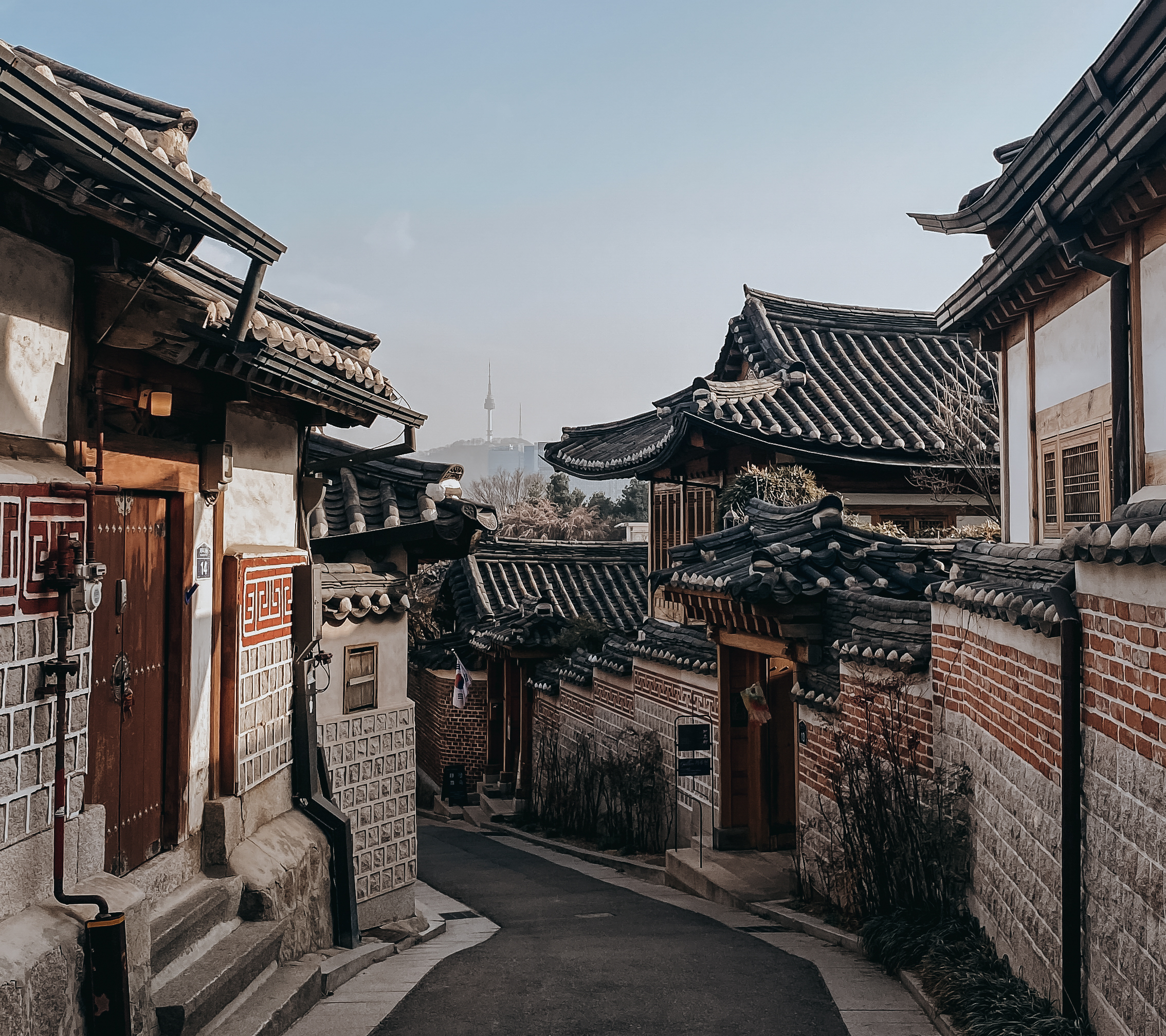
COMING SOON: 50 Festivals in South Korea – all over the year!
Food
When it comes to culinary traditions, South Korea boasts a vibrant and diverse food culture that’s as rich as its history and as varied as its landscapes. Korean cuisine is a delicious reflection of the country’s cultural heritage and its people’s deep connection to the land.
- Kimchi: The Korean National Dish -Fermented Napa Cabbage
- Bibimbap: Rice Bowl with Vegetables, Red Pepper Paste, Beef or Tofu
- Bulgogi: Thinly Sliced Marinated Beef or Pork grilled to Perfection
- Tteokbokki: Spicy Stir-fried Rice Cakes often with Fishcake
- Korean BBQ: Usually Pork belly or Marinated Beef or Pork Ribs
- Jjajangmyeon: chewy Noodles with a thick, savory Black Bean Sauce
- Korean Fried Chicken: the best Fried Chicken of the World.. trust me
- Kimbap: Seaweed Rolls with Rice, Vegetables, Beef, Crab or Tuna
- Naengmyeon: spicy (Bibim〃) or non spicy (Mul〃) Korean Cold Noodles
- Haemul Pajeon: Savory Seafood Pancake (or a Green Onion Version)
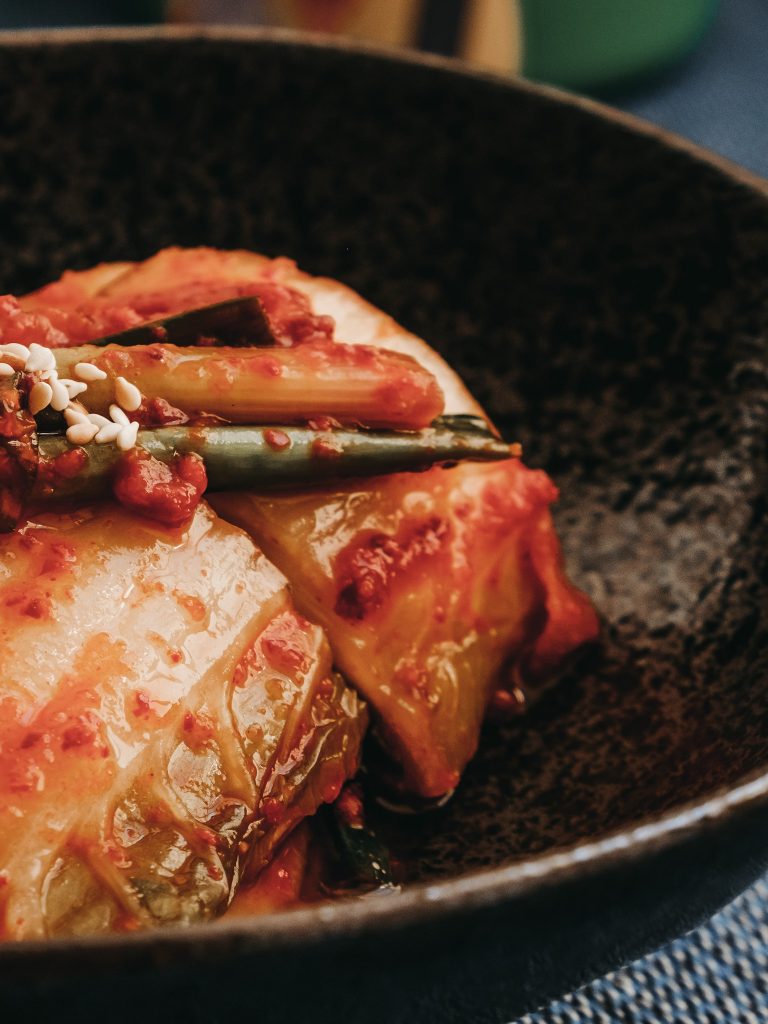
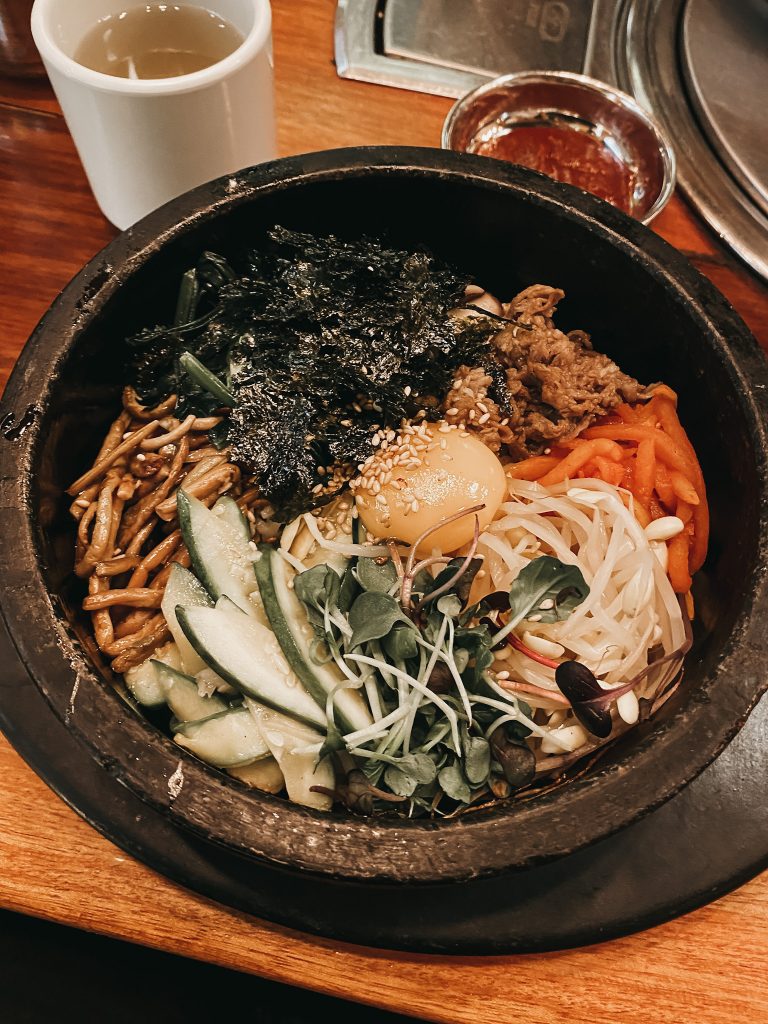
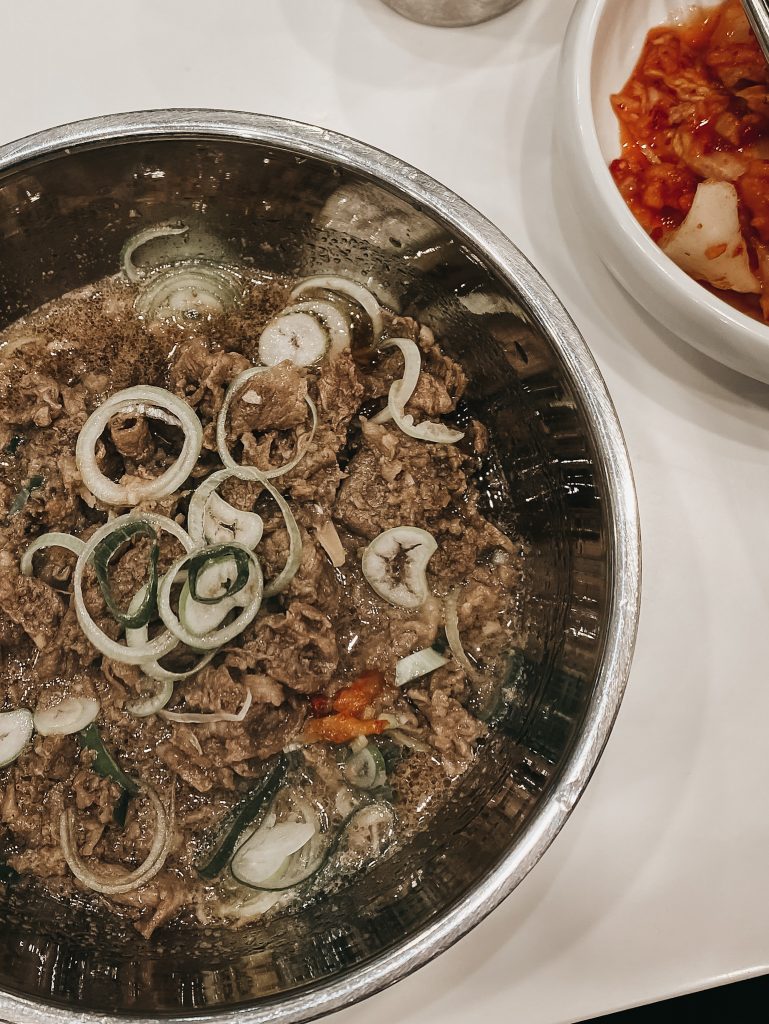
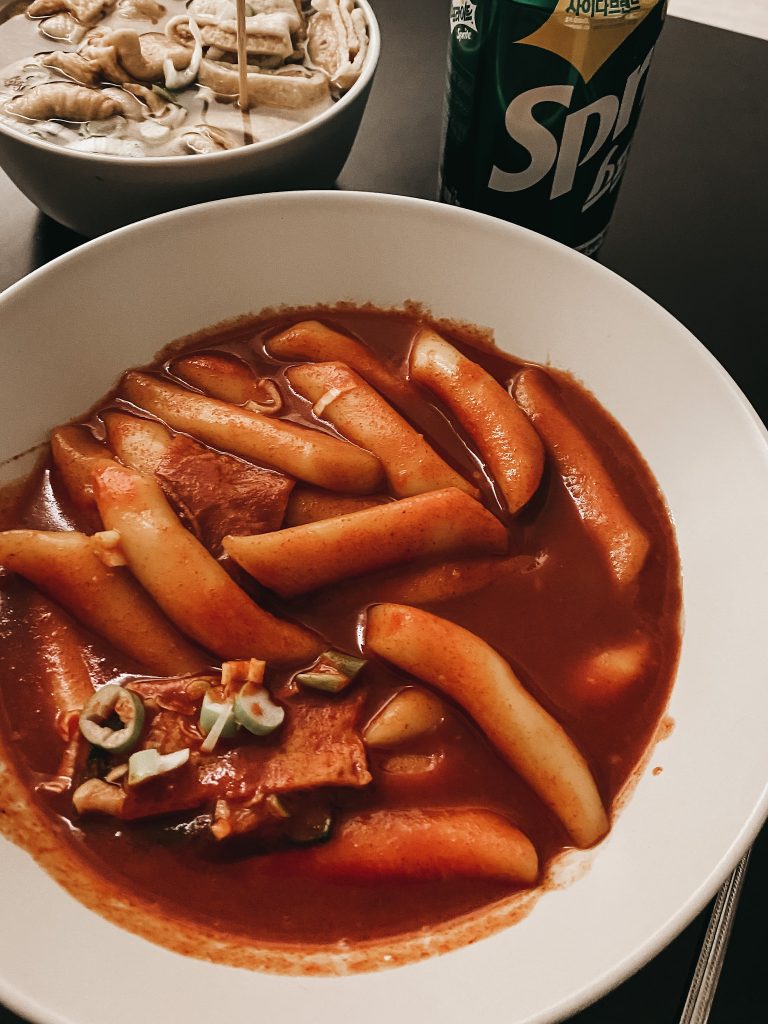
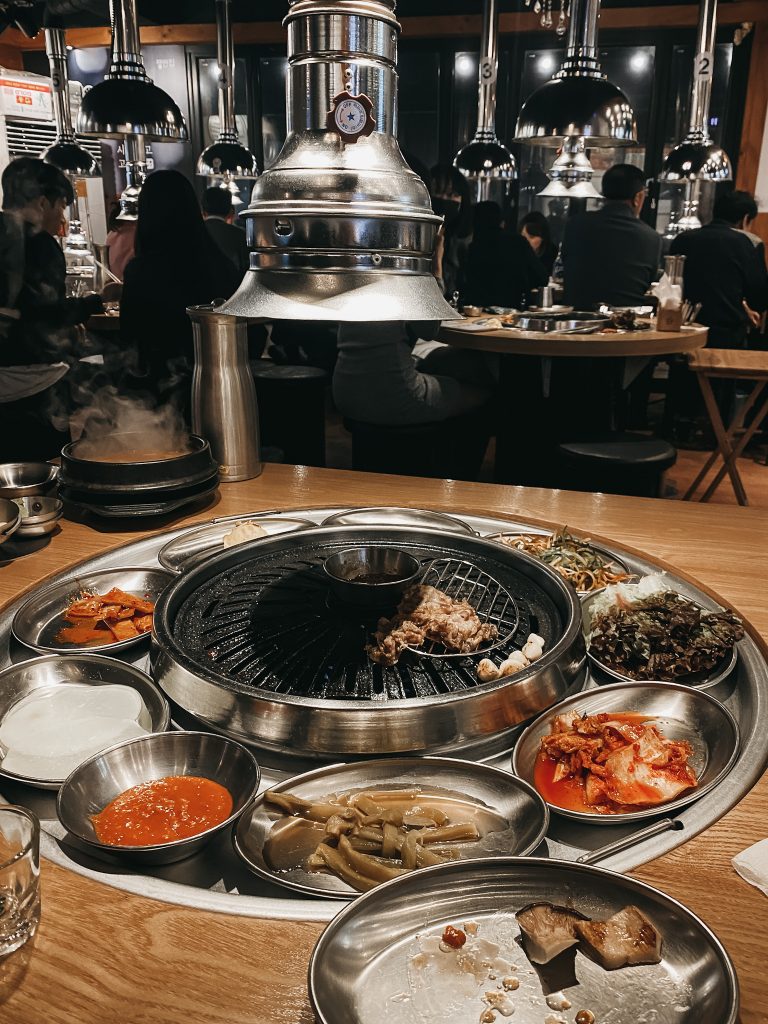
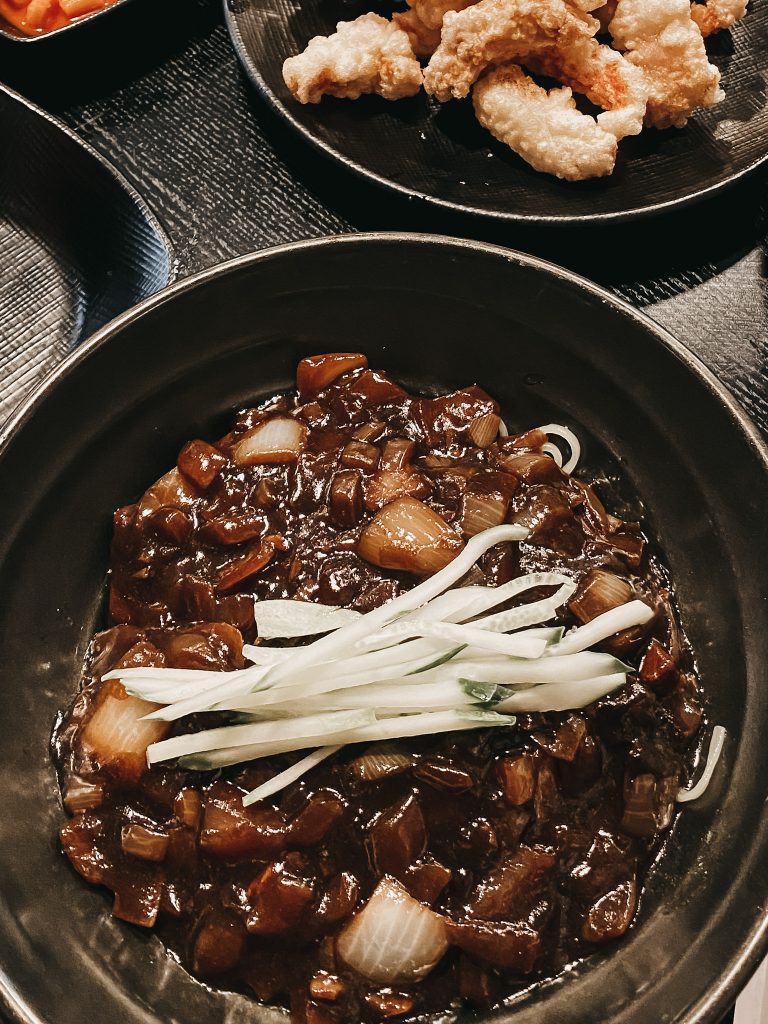
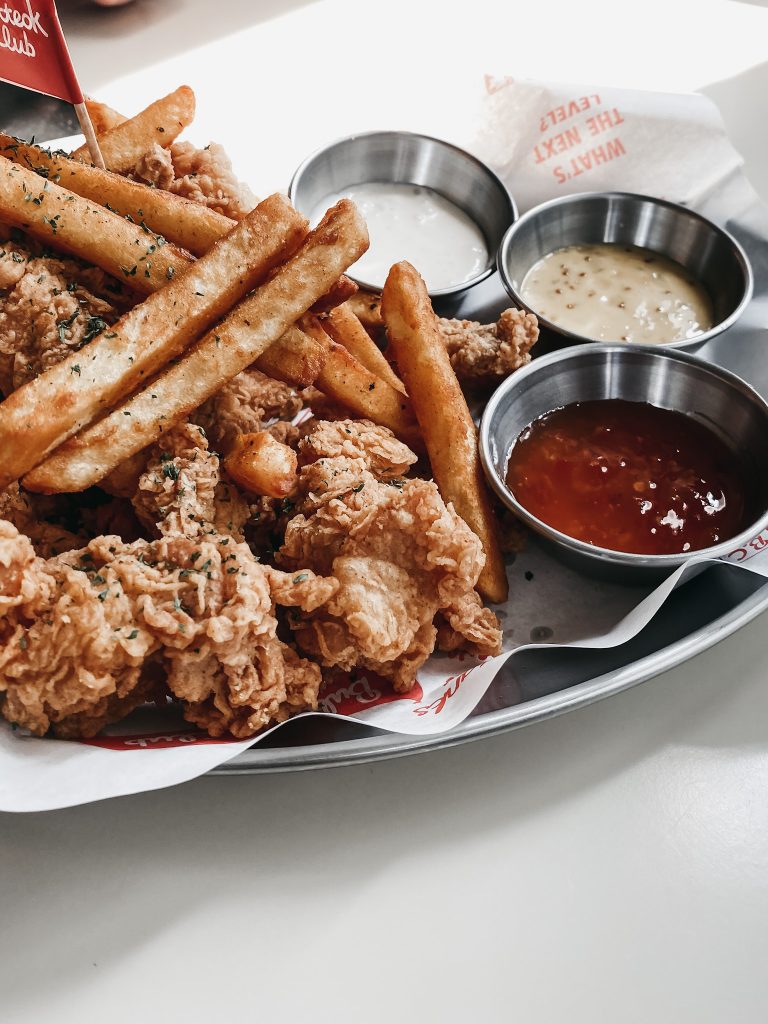
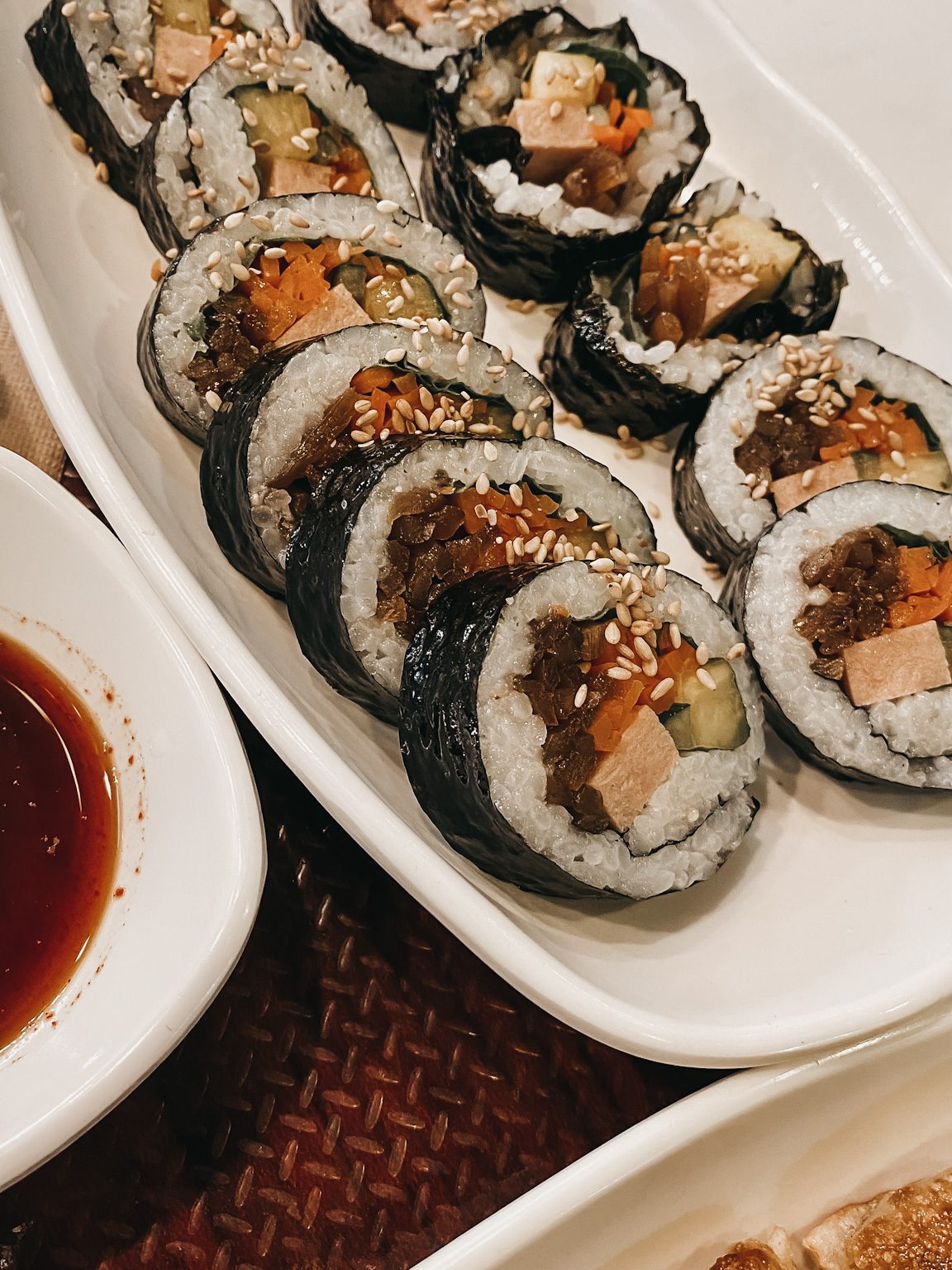
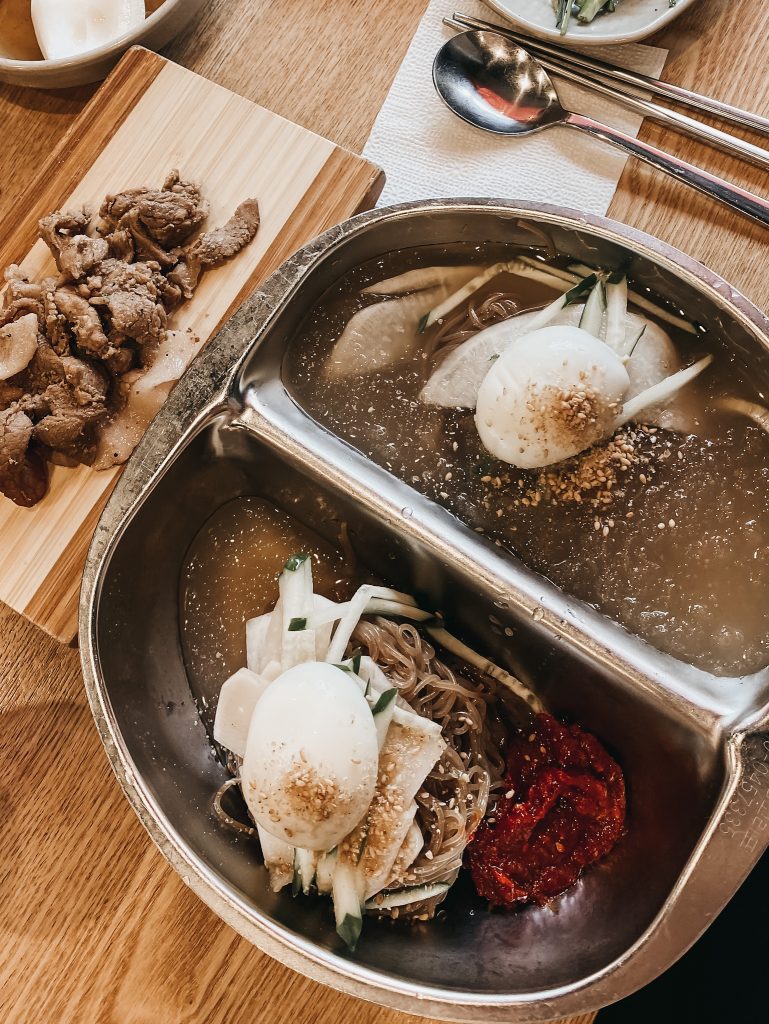
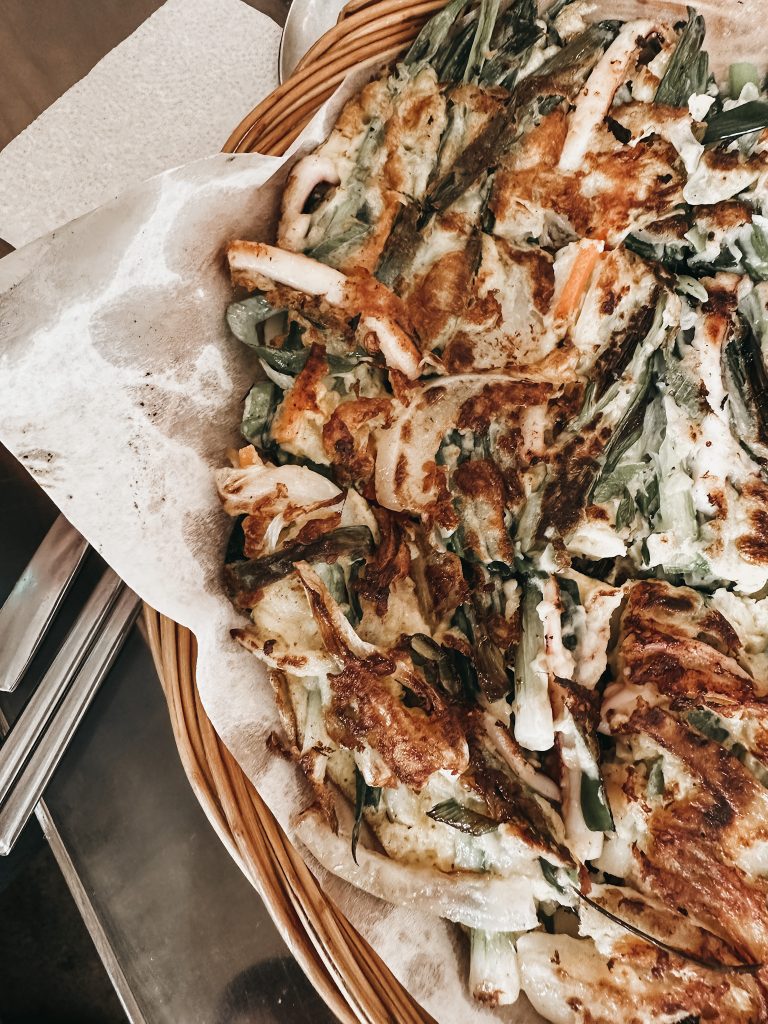
Shopping
Korea is a shopper’s paradise, where traditional markets and modern malls coexist harmoniously, offering an array of unique and trendy products. Whether you’re looking for fashion, cosmetics, electronics, or traditional souvenirs, South Korea has it all.
Before diving into the shopping destinations, it’s essential to be aware of the typical operating hours in South Korea. Most stores and markets open around 10 AM and close between 9 PM and 10 PM. However, some smaller shops might have shorter hours, and certain areas, like Myeongdong, stay bustling well into the night. And of course most Convenience Stores are open 24 hours. Banks, Post offices and government organizations usually open from Monday to Friday 9 AM to 6 PM.
- Myeongdong: Shopaholics will love this bustling shopping district in Seoul, offering everything from cosmetics to fashion. You can get some free samples there, but be aware of clever sales people trying to sell you overpriced product packages!
- Dongdaemun Market: Dongdaemun is a historic market known for its wholesale clothing and fabrics. It’s the place to go for fashion enthusiasts, second hand fans and night owls, as many shops are open until late at night.
- Hongdae Shopping Street: This area close to Hongik University is not just great for busking and party, it’s also the perfect spot for young fashion and the newest trends.
- Namdaemun Market: As one of the oldest and largest markets in Seoul, Namdaemun Market offers a wide variety of goods, including clothing, accessories, electronics, and traditional Korean products.
- Insadong: If you’re looking for traditional Korean crafts, art, tea and antiques, Insadong is the place to go. It’s a hub for Korean culture and heritage.
- Department Stores: Lotte, Hyundai, Shinsegae are some of Korea’s leading department store chains, offering a wide range of luxury brands, cosmetics, and duty-free shopping for tourists.
- Airport Duty-Free Shops: Before departing, explore the extensive duty-free shops at Incheon International Airport, where you can purchase cosmetics, electronics, and luxury items at tax-free prices.
Souvenirs
When visiting Korea, you’ll find an abundance of unique and memorable souvenirs to bring back home. Here are ten common souvenirs – besides magnets or postcards – to consider:
- Korean Beauty Products: Innovative cosmetics and skincare products from brands like Laneige, Innisfree, and Tony Moly – Olive Young is perfect for this!
- K-Pop Merchandise: Posters, albums, apparel, and memorabilia featuring your favorite K-Pop idols are usually much cheaper in South Korea.
- Hanji Crafts: Traditional paper-made crafts like fans, lanterns, and stationery.
- Korean Ginseng: Renowned for its health benefits, Korean ginseng is available in various forms, including teas, soaps and supplements.
- Handmade Pottery: Traditional ceramics like tea sets make great gifts
- Mother of Pearl: Exquisite traditional pearl jewelry, boxes, mirrors or the new option: Griptoks.
- Korean Tea: High-quality teas such as green tea or traditional Korean herbal teas – Insadong is the best place to shop for those.
- Korean Snacks: Unique Korean snacks like ginseng candy, honey butter chips, and seaweed snacks.
- Hand Fans: Hand-painted folding fans often adorned with intricate designs or the electric equivalent used by almost all Koreans to survive Korean hot, humid summer.
- Korean Socks: Sounds weird, but they’re just too cute and cheap, but still offer great quality.
TIME TO SAY GOODBYE
I am certain that you will love your stay in Korea and even if you won’t be able to see and explore everything (I lived here for 2 years and there are still endless things I haven’t done) I hope that you will go home packed with great memories! Come back soon ♡



